Best Waves plugins 2025: Our pick of effects to help make you a better music producer
From emulations of iconic studio hardware to the most out-there multi-effects and versatile vocal tuners, we round up the Waves effects that matter in music production

1. The quick list
2. Best mixing plugin
3. Best vocal effect
4. Best for iconic reverb
5. Best pro vocal plugin
6. Best compressor plugin
7. Best EQ plugin
8. Best for bass
9. Best for drums
10. Best for attack
11. More recommendations
12. Buying advice
13. How we choose products
When we interview producers and artists here at MusicRadar, Waves is the one name that seems to crop up more than any other when we ask them which plugins they use. There's a very good reason for this: Waves makes a huge number of high-quality plugins! The list is so big, in fact, that it can be difficult to decide which are best for your style of music making. That's why we've created this guide to the best Waves plugins 2024, featuring products we’ve had hands-on experience with.
We'll explain what they do, which are best, and the strengths and weaknesses of each one.
There should be something for everyone in this guide, no matter if you are a skilled producer like those we talk to, or just starting out on your music-making journey.
Waves is especially well known for emulating classic pieces of studio hardware in its software plugins. It has everything from the processors used on legendary mixing consoles to the plate reverbs used by The Beatles at the iconic Abbey Road studios.
The company also produces a range of completely new plugins aimed at the contemporary producer, so you get incredible multi-effects that help add depth and interest to any instrument recording, and plenty of vocal effects to give you every tuning and wild effect used in modern pop production.
Top tip: You can purchase each Waves plugin individually – and make sure you get the huge discounts in the almost inevitable Waves sales when you do. Or you can subscribe to a two-tier subscription model called Waves Creative Access, which gives you everything Waves - including all of our recommendations - for a monthly fee.
We've detailed more about this along with advice on buying Waves plugins at the bottom of this guide. You can jump to this section for more general advice and know-how about effect plugins, or get straight into our top picks below, including six recommendations for common studio practices. Read on for how Waves can help get you to the next level of music creation and production.
The quick list
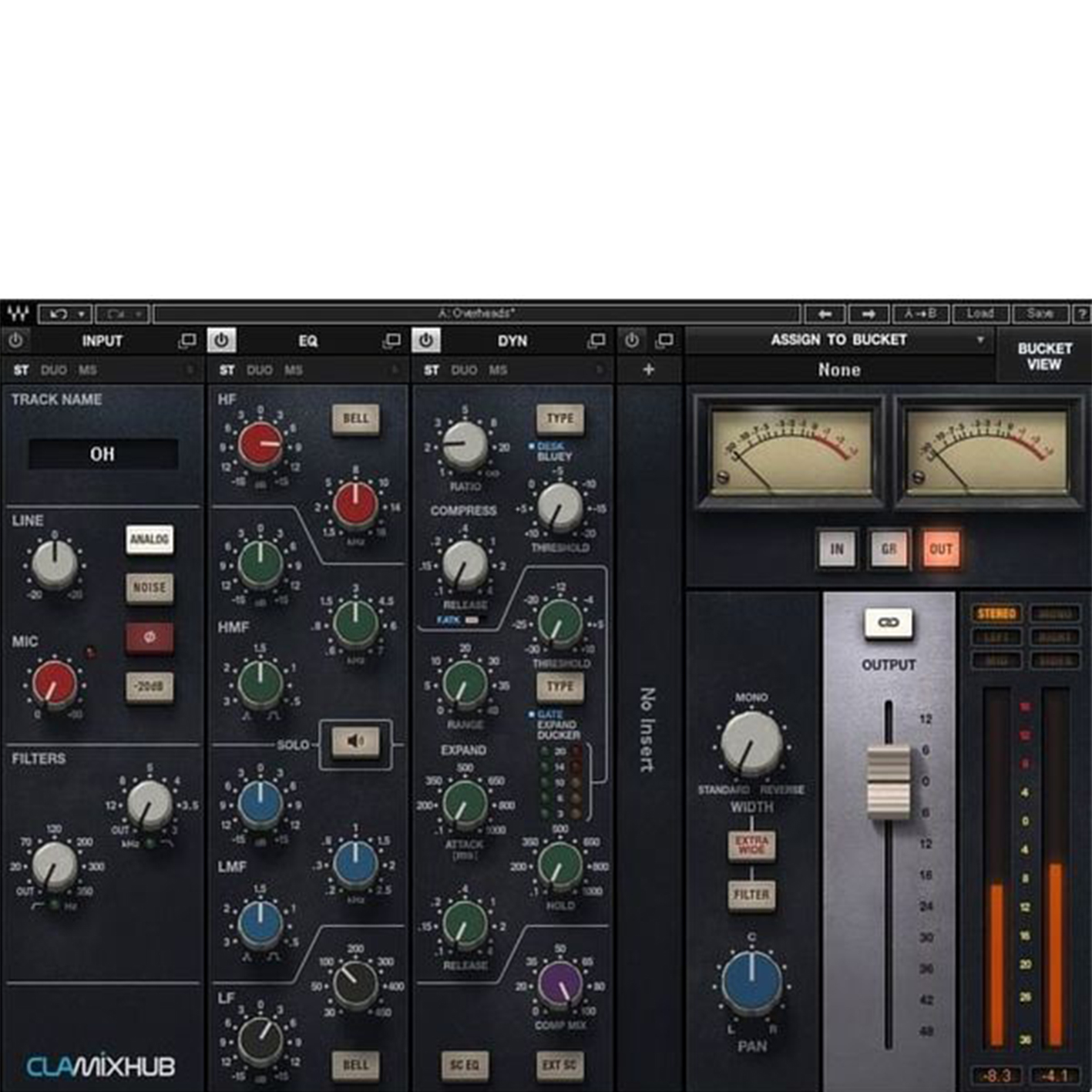
MixHub is an emulation of a full channel strip from Grammy-winning engineer Chris Lord-Alge's SSL 4000 series mixer. Incredibly, it lets you access up to 64 instances of the plugin via any single one of them, so a full SSL console is effectively recreated in a single window within the host DAW, conveniently grouped into banks of eight channels at a time, called ‘Buckets’.
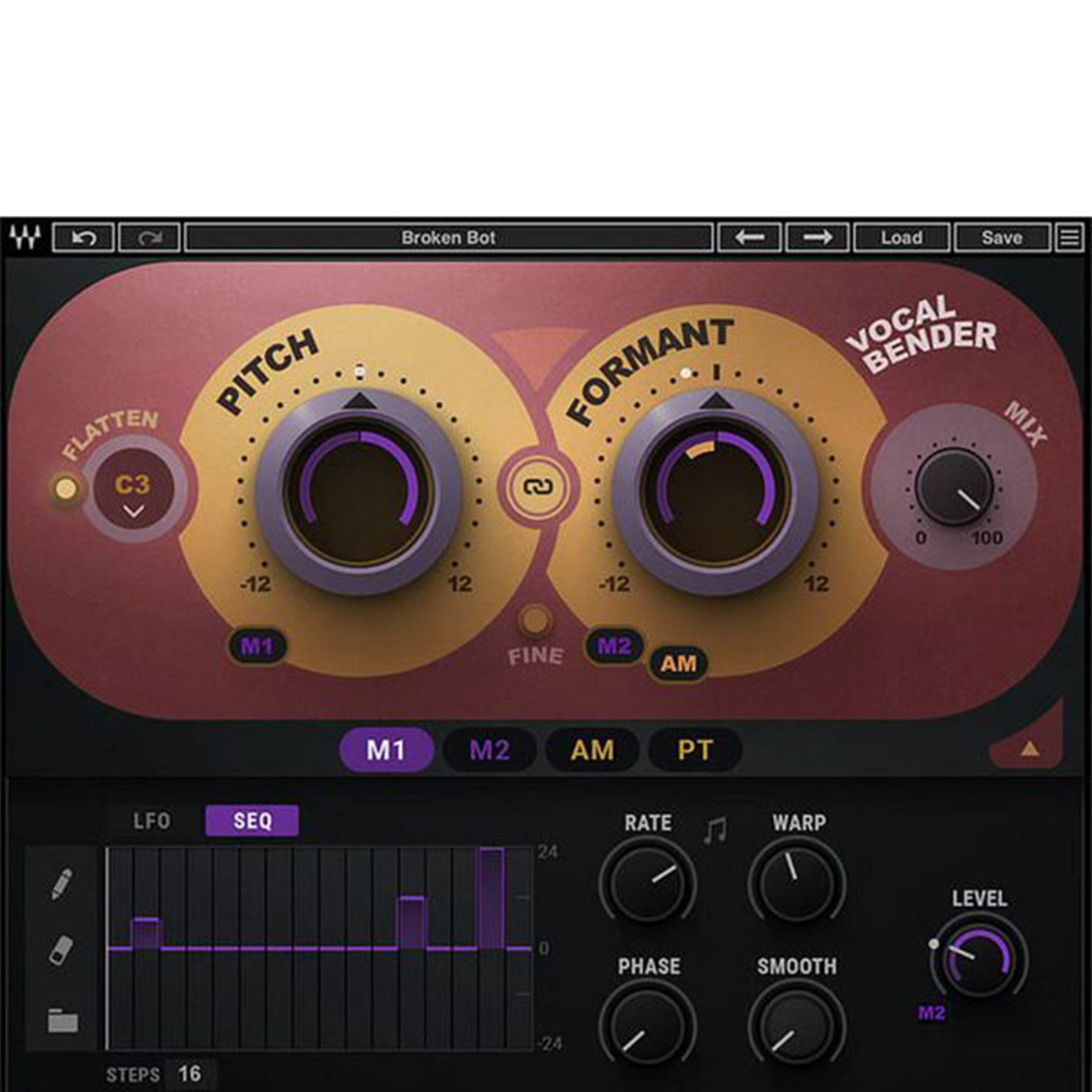
Vocal Bender offers up speedy, real-time pitch-shifting and instant access to some of the modern vocal producer’s tricks, all controlled via an intuitive UI. The basic simplicity of this UI invites immediate experimentation but there is a significant amount of complex and utterly unique programming potential here, too.
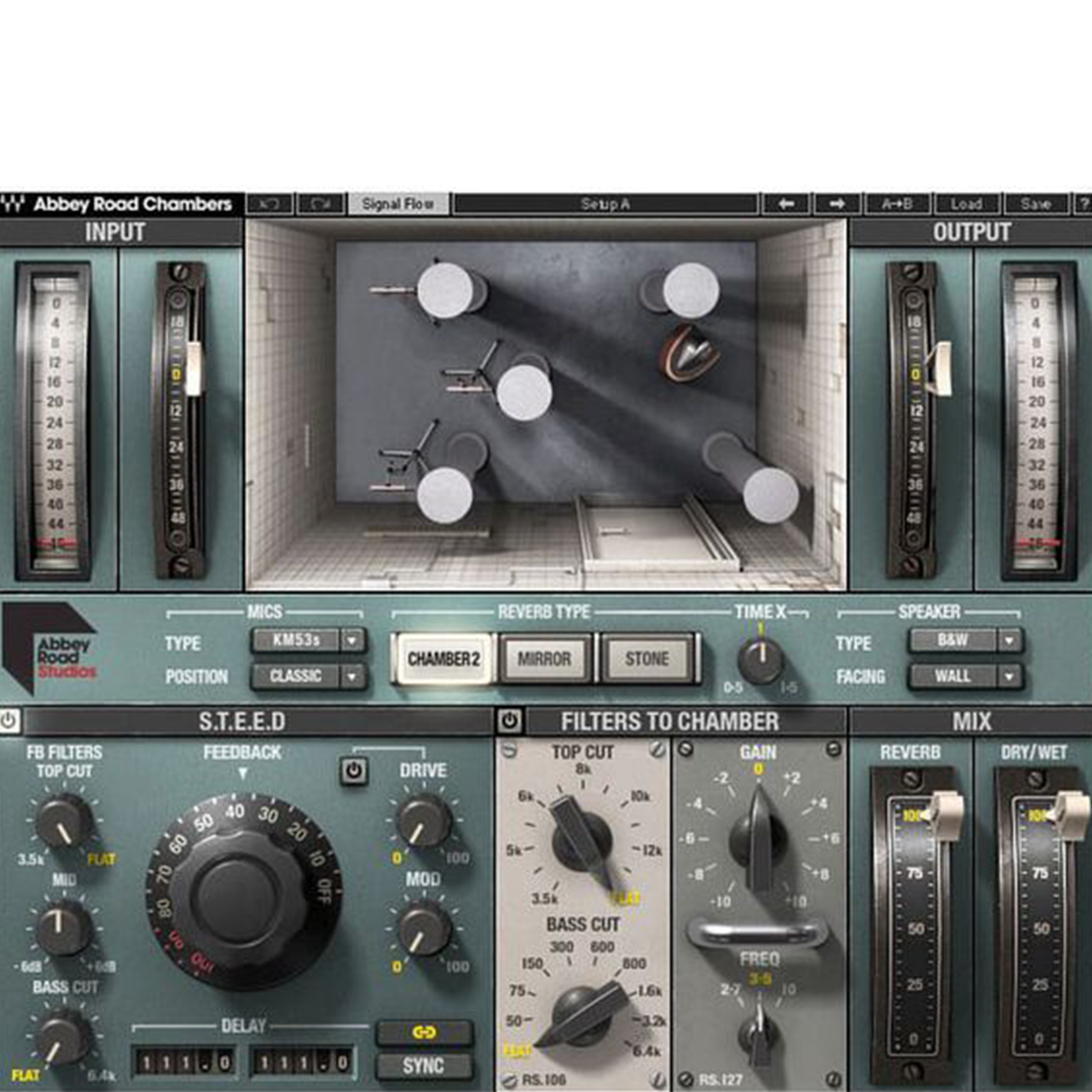
One of the most famous echo chambers of all time is the one found at the iconic Abbey Road Studios’ Studio Two – an environment recreated by Waves in their Abbey Road Chambers plugin. For those seeking authentically vintage ambience unachievable with other plugins, this specialised spatialiser delivers on all fronts.
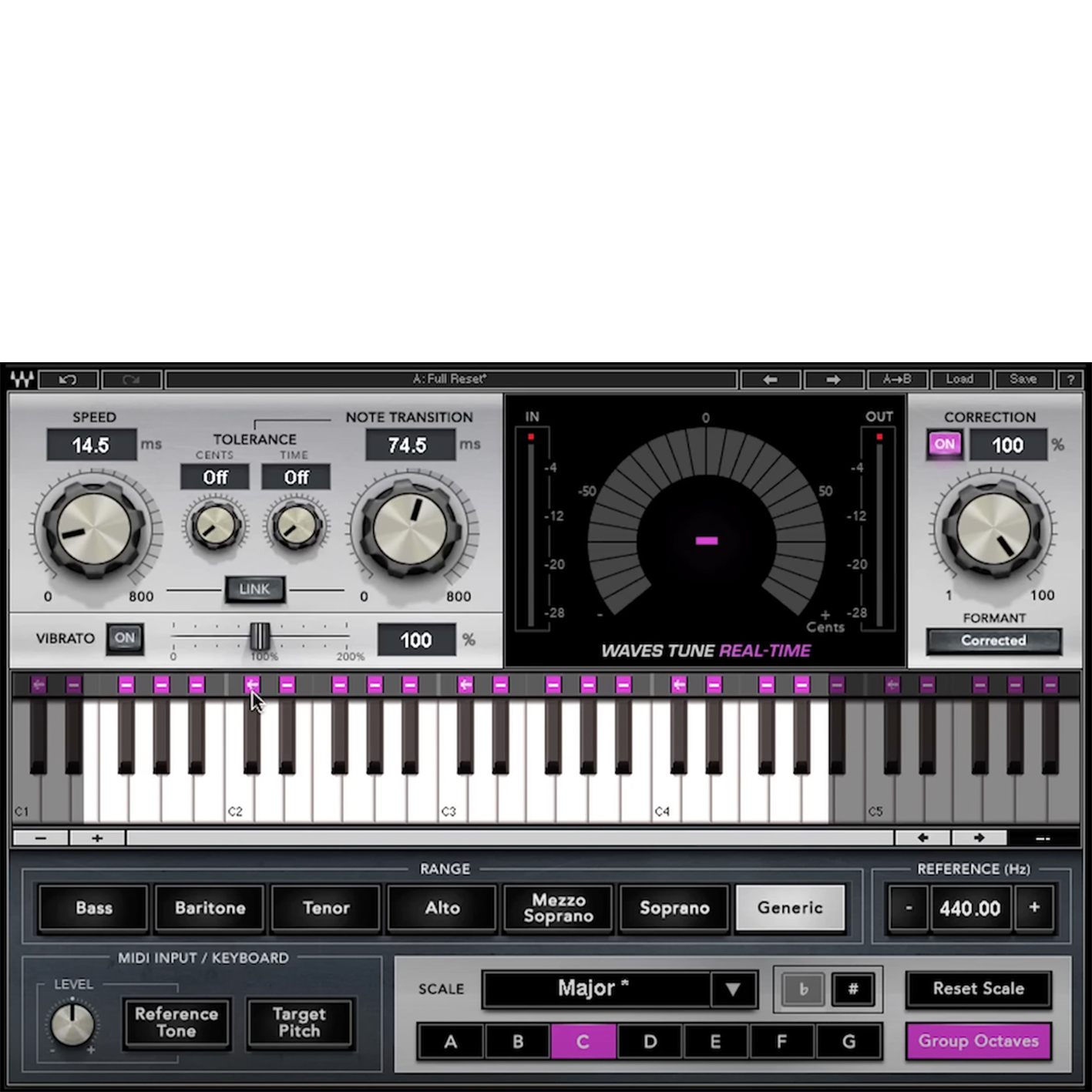
Waves Tune Real-Time is a pro effect for real-world situations. It tunes vocals, or any other audio come to that, with incredibly low latency. This means it can be applied to both live and studio vocals, for example, with perfectly tuned vocals and no delay. It might be a little processor intensive - as it is doing all the number crunching live - but of all the vocal processors out there, it has the most use in real-life situations.
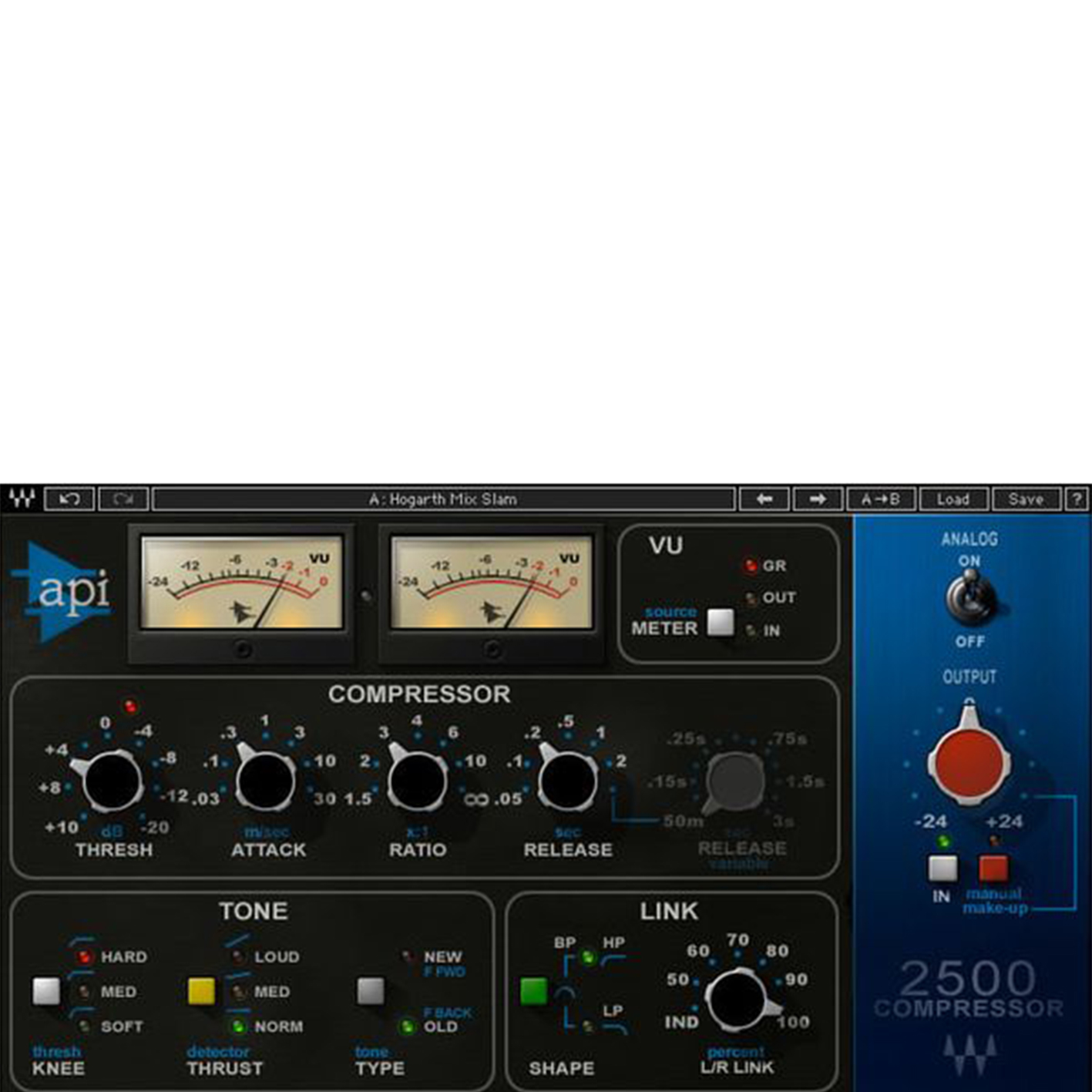
API’s 2500 is known to be one of the most versatile bus compressors around, and Waves’ official software recreation does a stellar job of emulating the original hardware’s revered design, behaviour and tone. In use, the API 2500 often excels where other compressors can’t, imparting individual sounds, sub-mixes and masters with sculptable punch and ‘glue’, ably assisted by its array of customisation options.
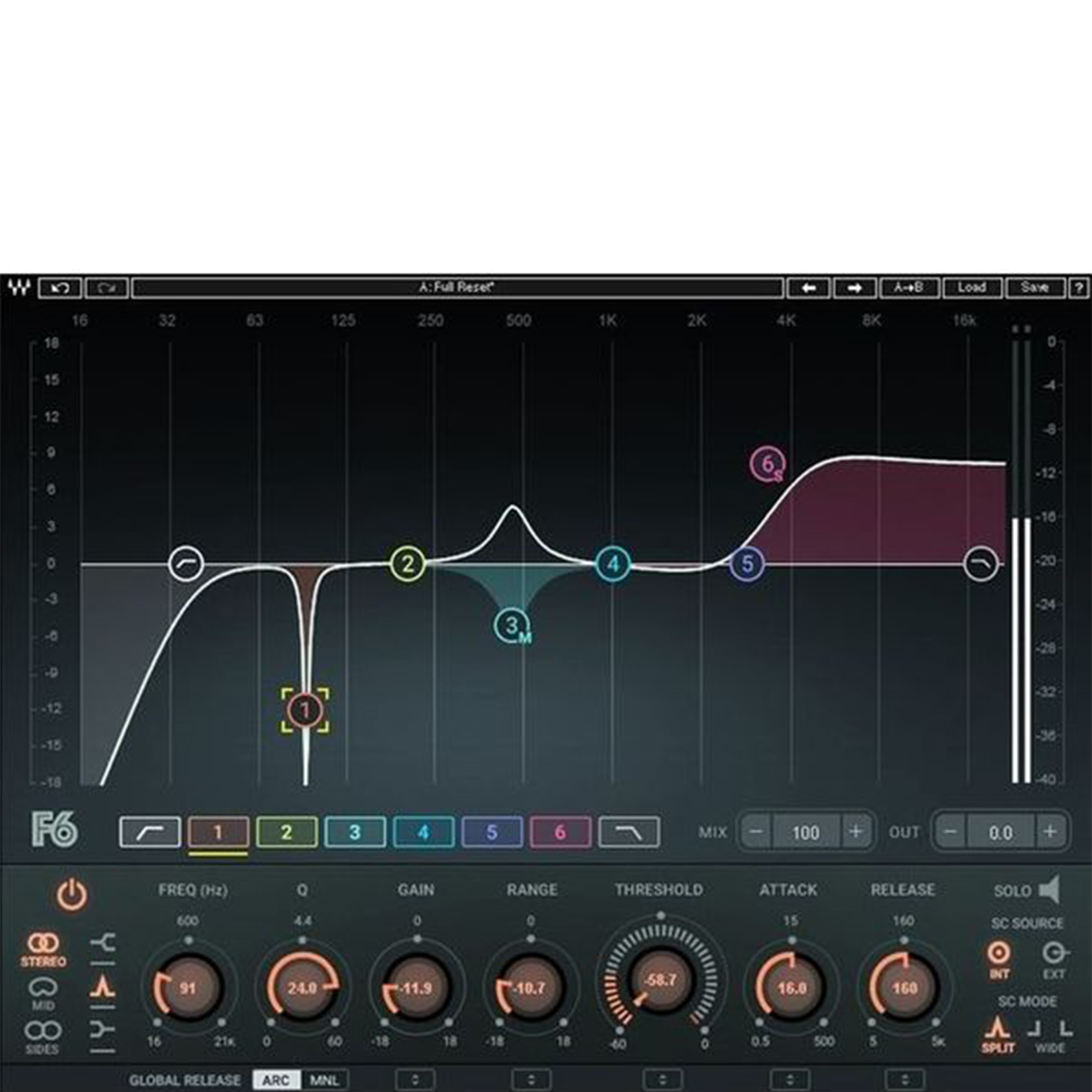
Every producer needs a fully-featured parametric EQ on hand for surgical frequency-sculpting tasks, and they don’t come much more powerful than F6 Floating-Band Dynamic EQ. Not only can its six “floating” bands be used for static boosts or cuts, but each is also dynamic, meaning that each can be turned into a frequency-specific compressor or expander, triggered by the level of the input signal (or via an external source).
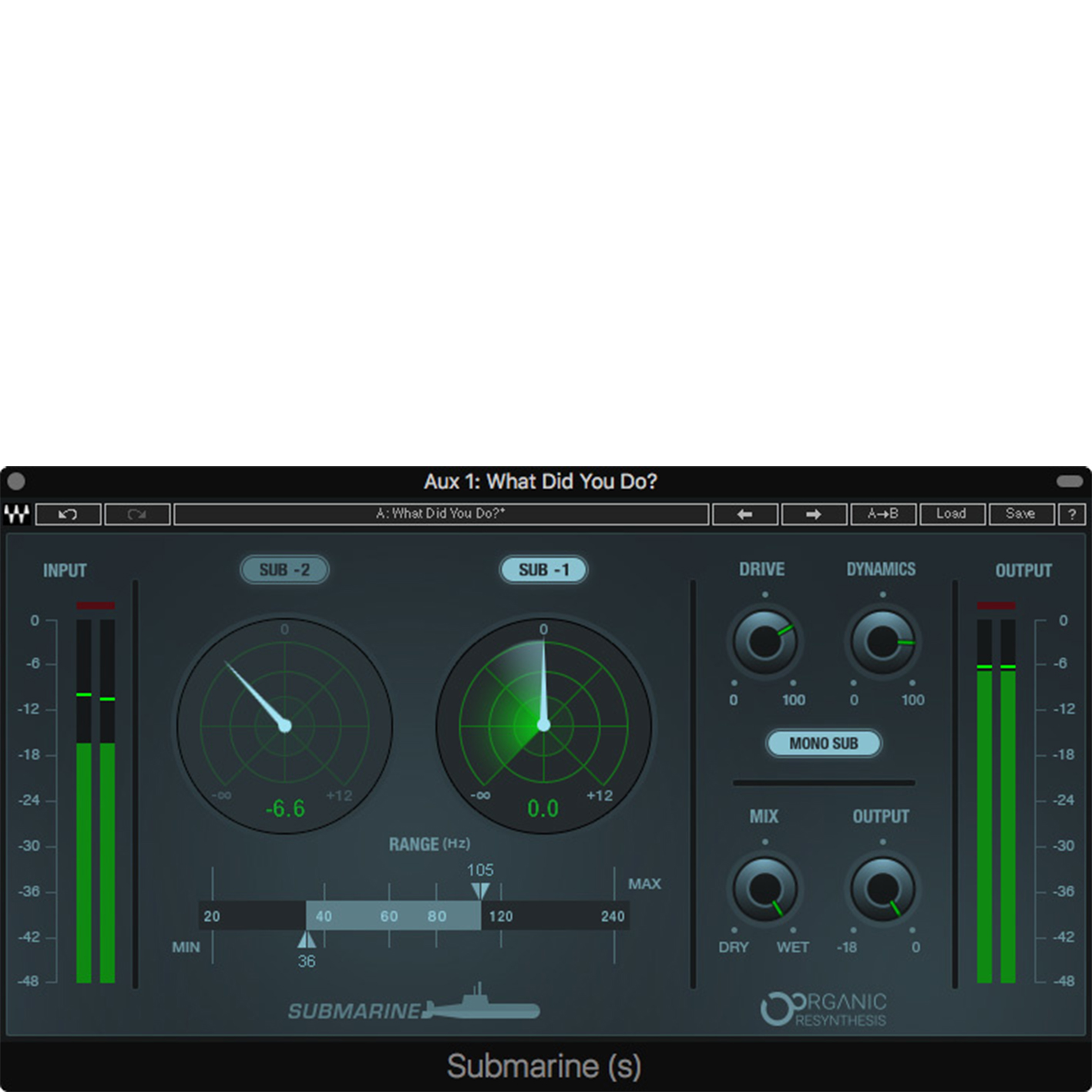
Submarine analyses the incoming audio’s carrier, pitch, formants and dynamics, then uses this information to generate two independent sub-bass signals, one and two octaves below the original pitch. It particularly excels at bolstering low-end instruments such as kicks and basslines, adding clean and defined low end where needed.
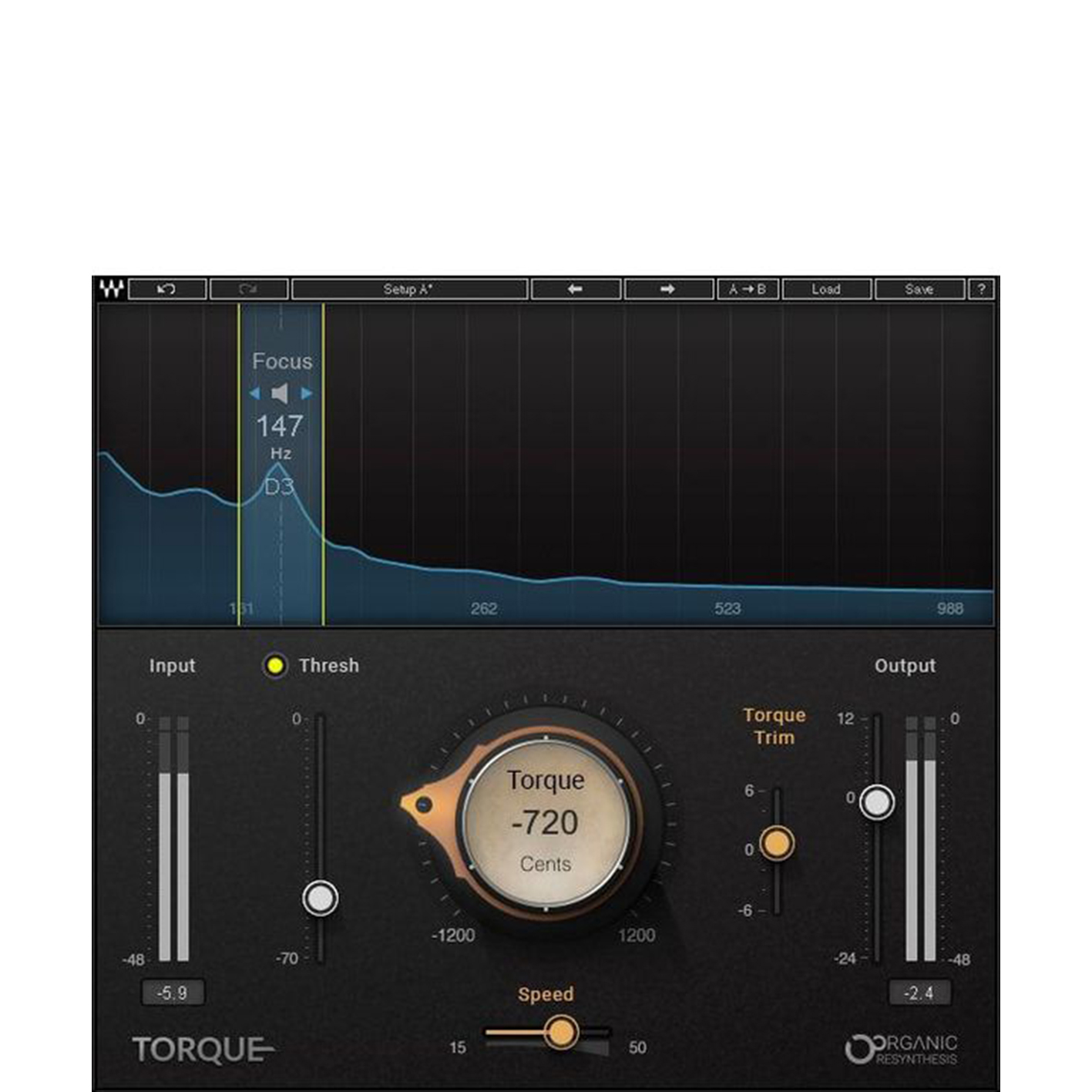
Drums are the backbone of any track; fail to tune your drum kit properly before hitting record, and you’ll have a nightmare repitching them to fit the rest of your music. Torque tracks the input signal’s amplitude, carrier and formant content, allowing you to shift the drum hit’s pitch in real time, with a degree of artefact-free cleanliness and precision unachievable through other means.
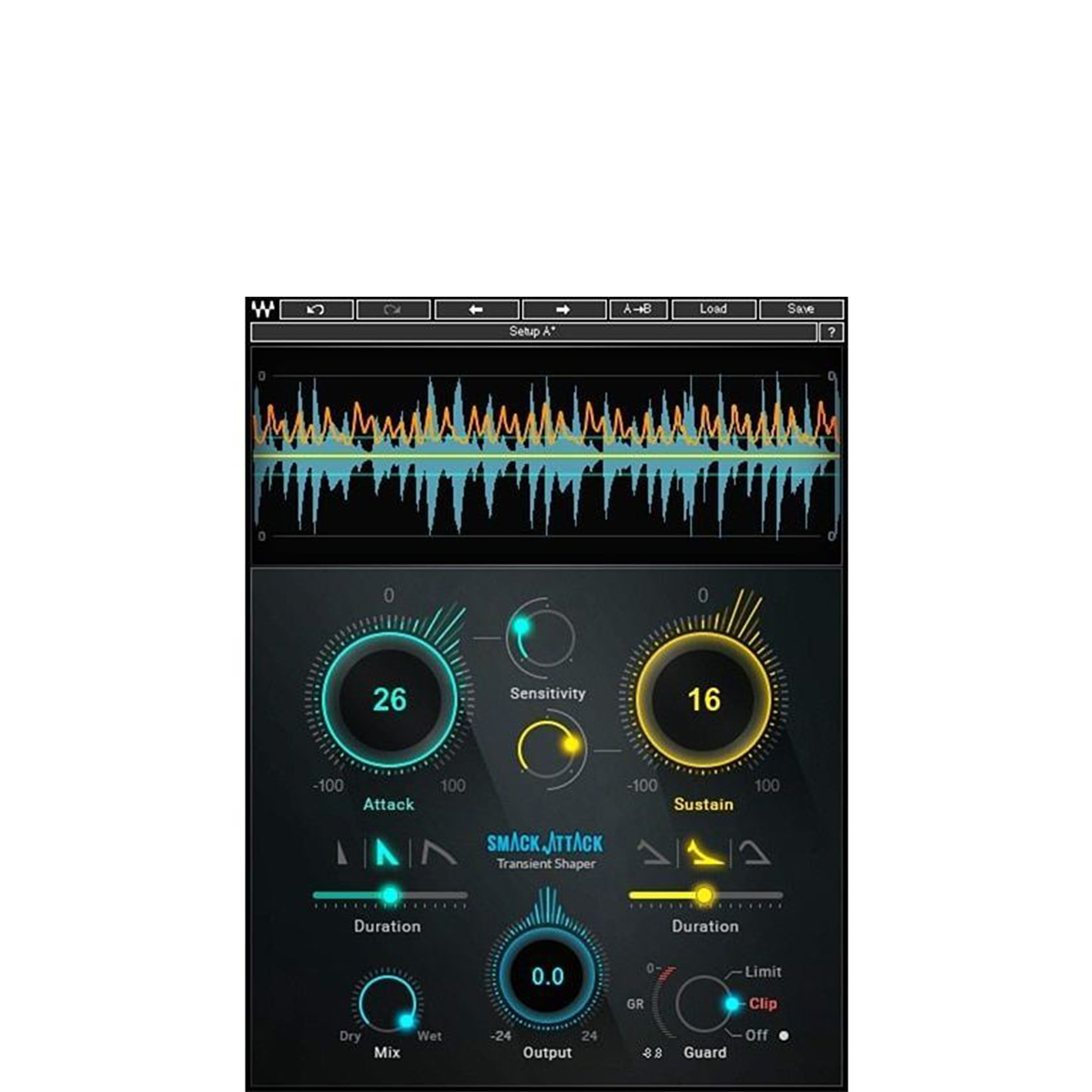
Smack Attack enables independent boosting and/or attenuation of the attack and release portions of the transients in the incoming signal - the hit of a drum, pluck of a string, etc - in order to give it more or less impact and punch. It requires a bit more engagement than other equivalent plugins, but the results it delivers are well worth the effort.
Best mixing plugin
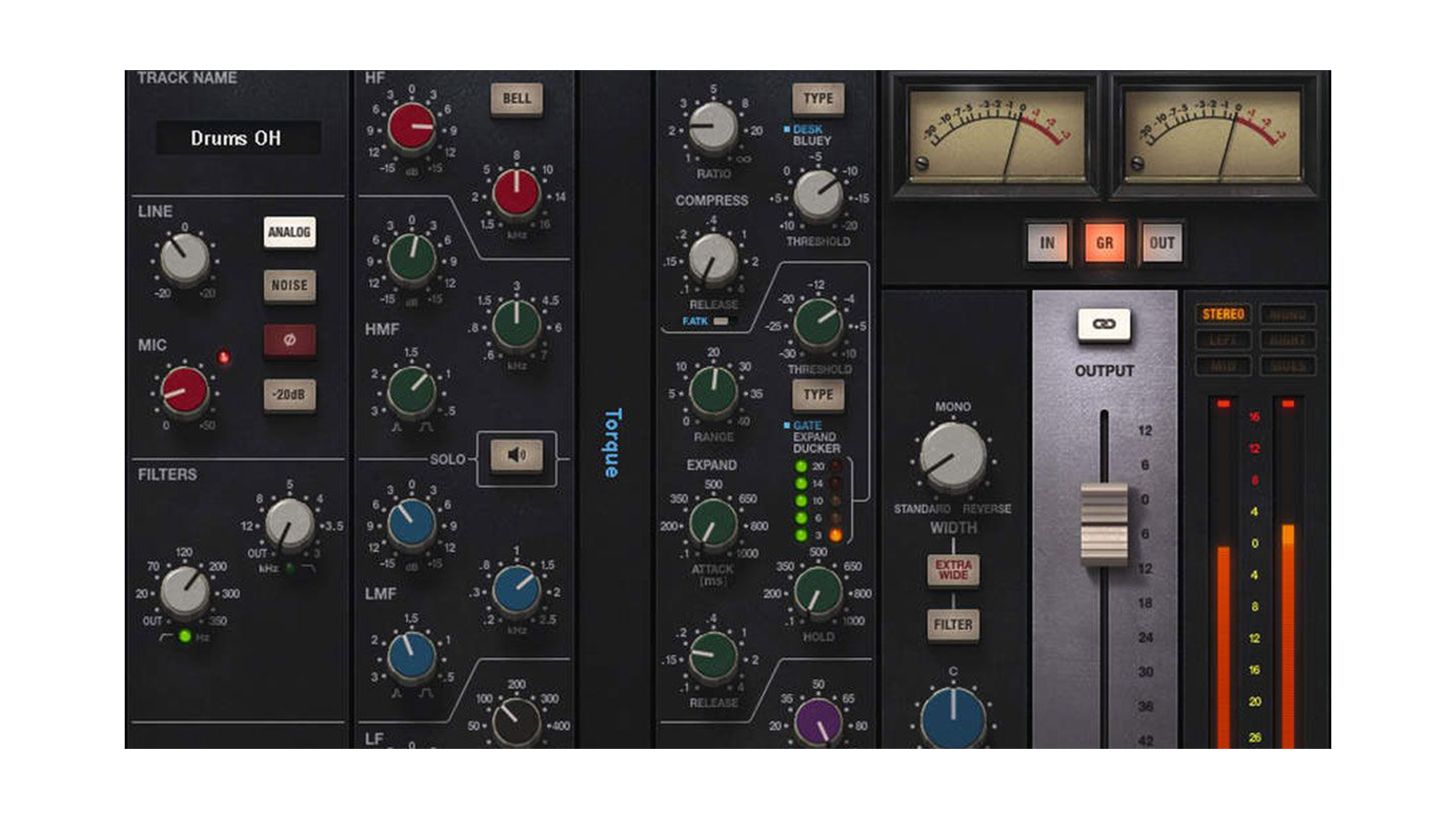
1. Waves CLA MixHub
Our expert review:
Specifications
Reasons to buy
Reasons to avoid
MixHub is an emulation of a full channel strip from Grammy-winning engineer Chris Lord-Alge's SSL 4000 series mixer. Incredibly, it lets you access up to 64 instances of the plugin via any single one of them, so a full SSL console is effectively recreated in a single window within the host DAW, conveniently grouped into banks of eight channels at a time, called ‘Buckets’.
The multitrack functionality is nothing short of revelatory, feeling like a natural replacement for the standard DAW mixer. Jumping between Buckets and modules is fast and intuitive, and there’s a real sense of empowerment that comes from being able to apply such high-end processing to the individual elements of a whole drum kit or vocal group.
CLA MixHub also sounds superb, exuding analogue warmth, depth and focus. Just like a real SSL, the EQ is easy to work with, while the extended Dynamics section gives plenty of enveloping options. CLA MixHub’s channel-aggregating approach works very well indeed, bringing your entire mix together in a single interface, and sounding fantastic along the way.
Read the full Waves CLA MixHub review
Best vocal plugin
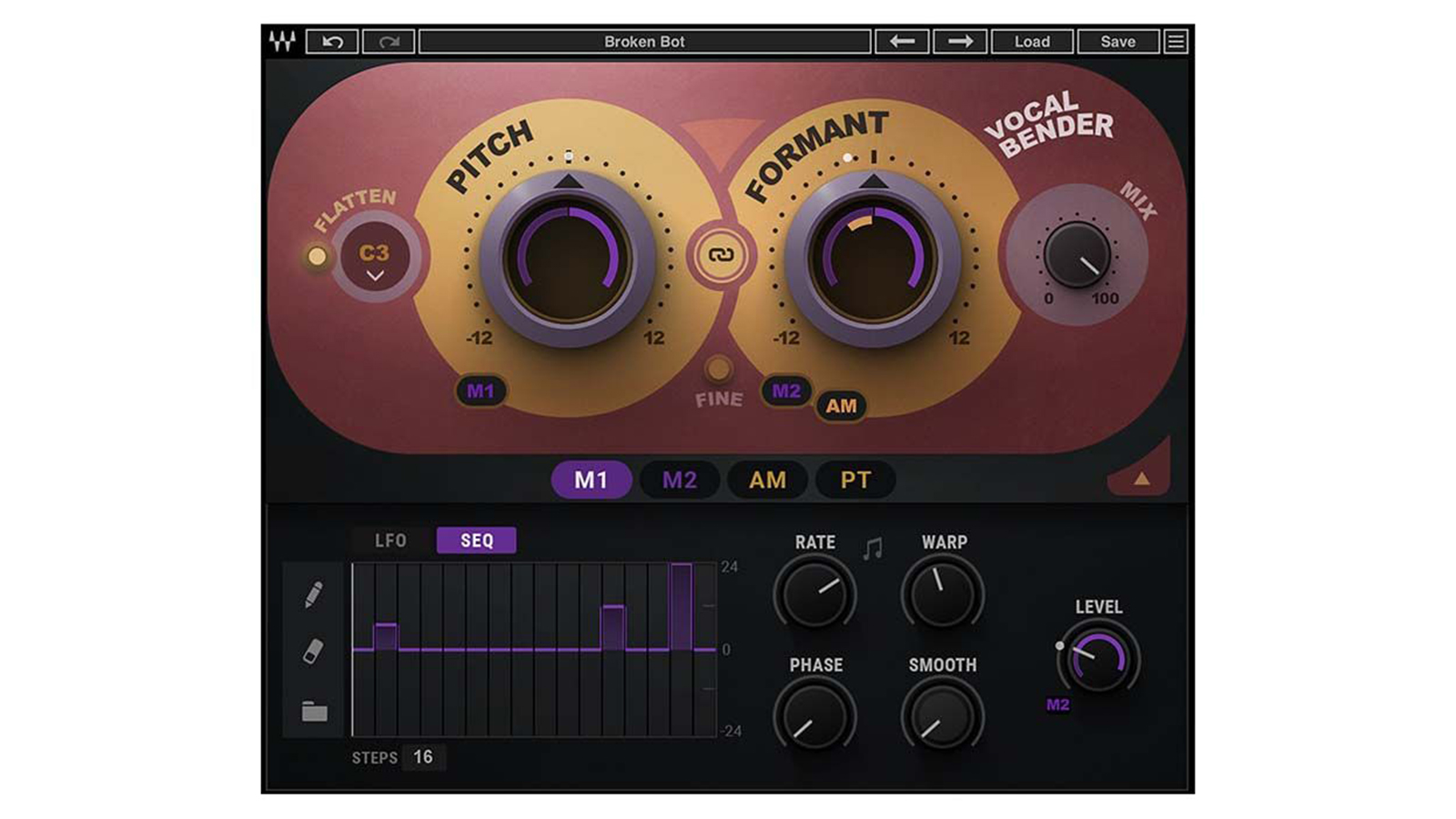
2. Waves Vocal Bender
Our expert review:
Specifications
Reasons to buy
Reasons to avoid
Vocals that – to varying degrees – modify in pitch and intensity, distort, stutter and loop can be found almost anywhere and in many genres. Vocal Bender offers up speedy, real-time pitch-shifting and instant access to some of the modern vocal producer’s tricks, all controlled via an intuitive UI. The basic simplicity of this UI invites immediate experimentation but there is a significant amount of complex and utterly unique programming potential here.
Once you reveal the modulation and automation options, vast creative scope presents itself. But the aim of the game with Vocal Bender is really getting that professional-sounding vocal manipulation at speed. We’re happy to report then, that not only does Vocal Bender provide that within minutes, but that there is absolutely no processing lag. We can dramatically scale the pitch of our backing vocals on the fly during track playback, and experiment with modulating our vocal in order to get the right tonal qualities without any CPU slack.
Vocal Bender is certainly one of the slickest plugins we’ve experimented with and delivers all you need to shape your vocals with no stress.
Read the full Waves Vocal Bender review
Best legendary reverb plugin

3. Waves Abbey Road Chambers
Our expert review:
Specifications
Reasons to buy
Reasons to avoid
Back in the day, the only way to apply reverberation to a recording was by playing said signal through a speaker in a reflective, reverberant room (an ‘echo chamber’), then recording the results with a microphone placed in that room.
One of the most famous echo chambers of all time is the one found at the iconic Abbey Road Studios’ Studio Two – an environment recreated by Waves in their Abbey Road Chambers plugin.
Abbey Road pioneered the STEED (Send, Tape, Echo, Echo, Delay) signal path, all meticulously modelled in Abbey Road Chambers. Impulse responses handle the reverb side of things, while speaker/mic models and a tape delay emulation complete the classic chain. For versatility, other rooms, speakers and mics can be swapped out, too.
For those seeking authentically vintage ambience unachievable with other plugins, this specialised spatialiser delivers on all fronts.
Read the full Waves Abbey Road Chambers review
Best pro vocal plugin
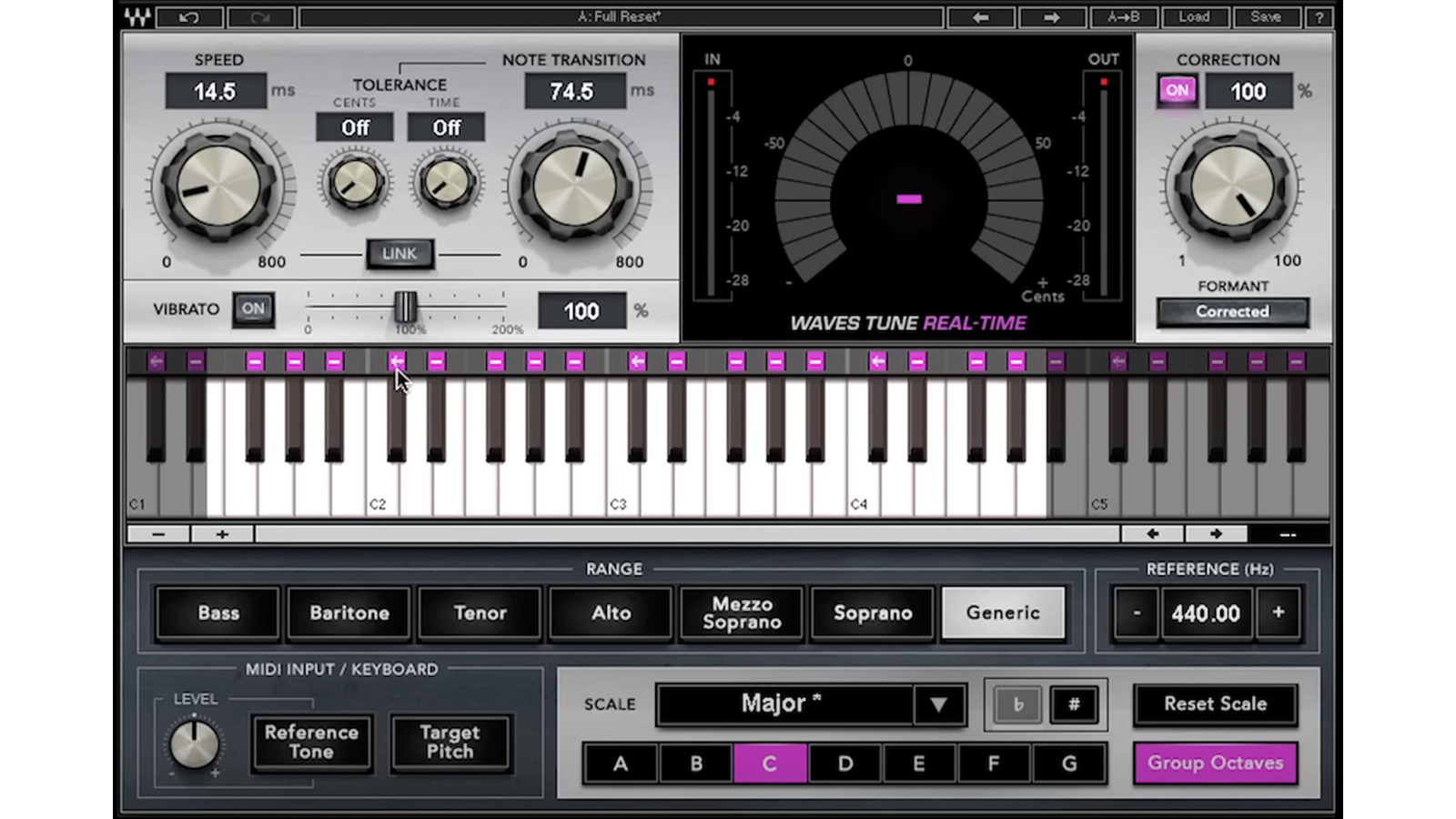
4. Waves Tune Real-Time
Our expert review:
Specifications
Reasons to buy
Reasons to avoid
We have several vocal plugins in this best Waves plugins guide because vocal processing has become so important in the music production world. But where, say, Vocal Bender and OVox focus on out-there effects, and Tune is more for nuanced and robotic vocal tuning, Waves Tune Real-Time is more of a pro effect for real-world situations.
The plugin tunes vocals, or any other audio come to that, with incredibly low latency. This means it can be applied to both live and studio vocals, for example, with perfectly tuned vocals and no delay. This, then, could be the plugin that keeps your favourite band in tune on stage if they are having an off day, or keeps that vocalist in check in the studio on their 100th take!
Real-Time displays the tuning of the audio in real time for which you can set an allowed variation and overall key. There are controls for Speed, Transition and Tolerance that, if set to harder values, can give you that automatic tuning effect live and as you sing.
Real-Time might be a little processor intensive - as it is doing all the number crunching live - but of all the vocal processors out there, it has the most use in real-life situations. Your audience will never know you're having a bad day on stage or in the studio.
Best compressor plugin
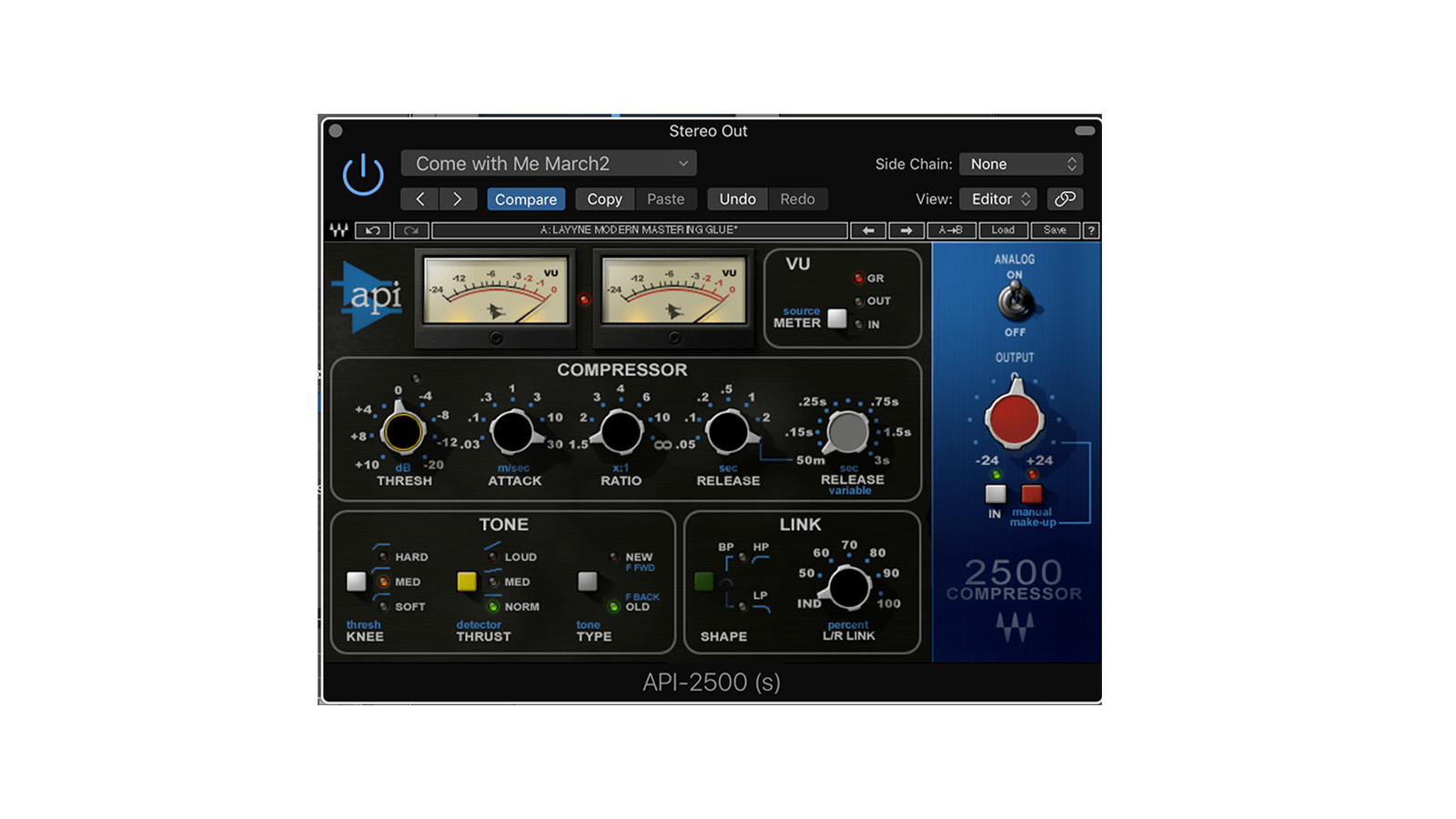
5. API 2500
Our expert review:
Specifications
Reasons to buy
Reasons to avoid
API’s 2500 is known to be one of the most versatile bus compressors around, and Waves’ official software recreation does a stellar job of emulating the original hardware’s revered design, behaviour and tone.
Like the original, this is a VCA design. The Tone section is where you choose between feed-forward or feed-back modes, and also like the hardware 2500, there’s plenty of scope for customising the input sidechain signal, with three Knee settings and a trio of Thrust options for unique ‘tilt’ filtering.
In use, the API 2500 often excels where other compressors can’t, imparting individual sounds, sub-mixes and masters with sculptable punch and ‘glue’, ably assisted by its array of customisation options.
Best EQ plugin
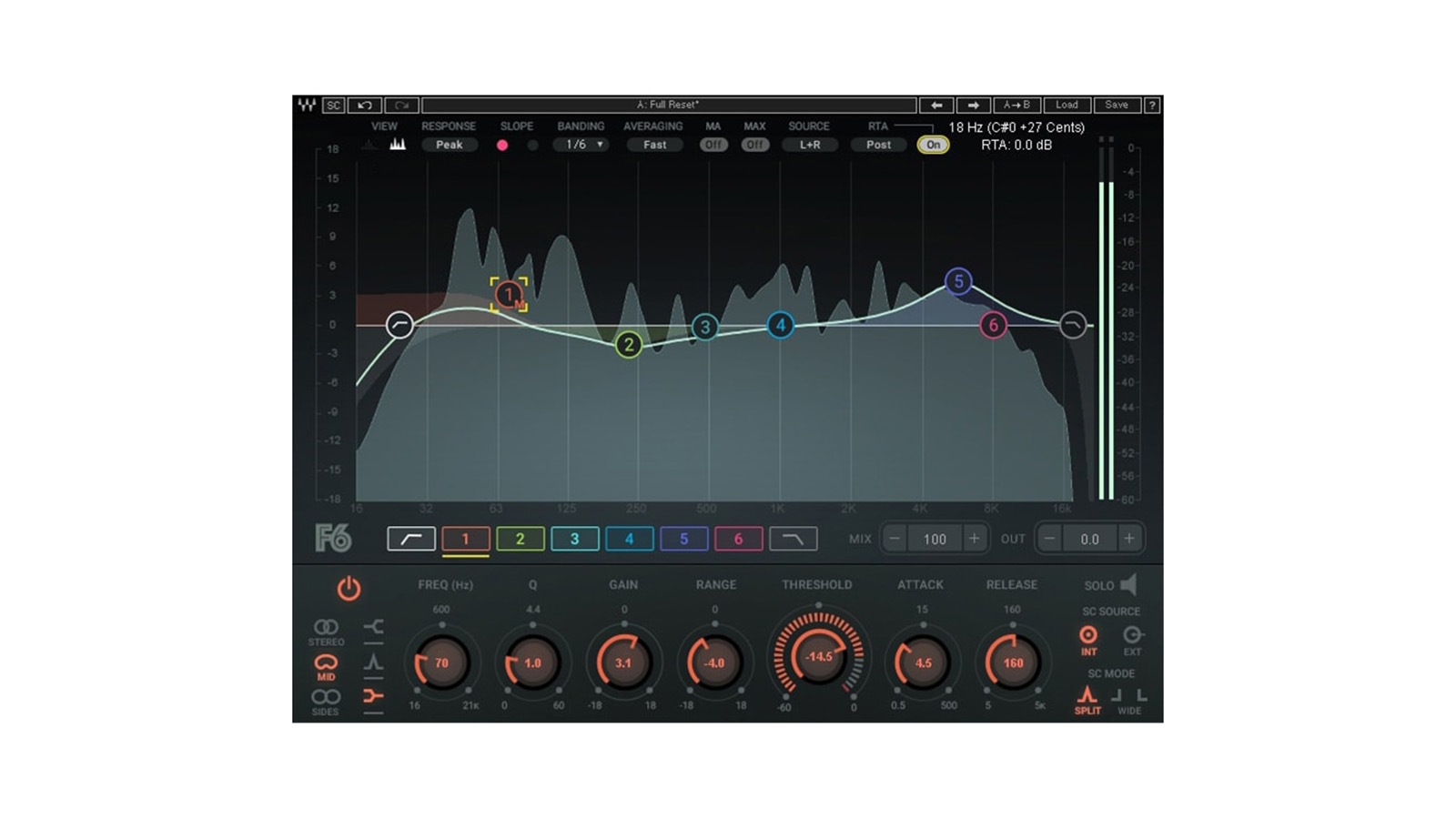
6. Waves F6 Floating-Band Dynamic EQ
Our expert review:
Specifications
Reasons to buy
Reasons to avoid
Every producer needs a fully-featured parametric EQ on hand for surgical frequency-sculpting tasks, and they don’t come much more powerful than F6 Floating-Band Dynamic EQ.
Not only can its six “floating” bands be used for static boosts or cuts, but each is also dynamic, meaning that each can be turned into a frequency-specific compressor or expander, triggered by the level of the input signal (or via an external source).
You also get wet/dry options for parallel processing; a customisable FFT-based spectral analyser; and solo monitoring per band.
Best for bass
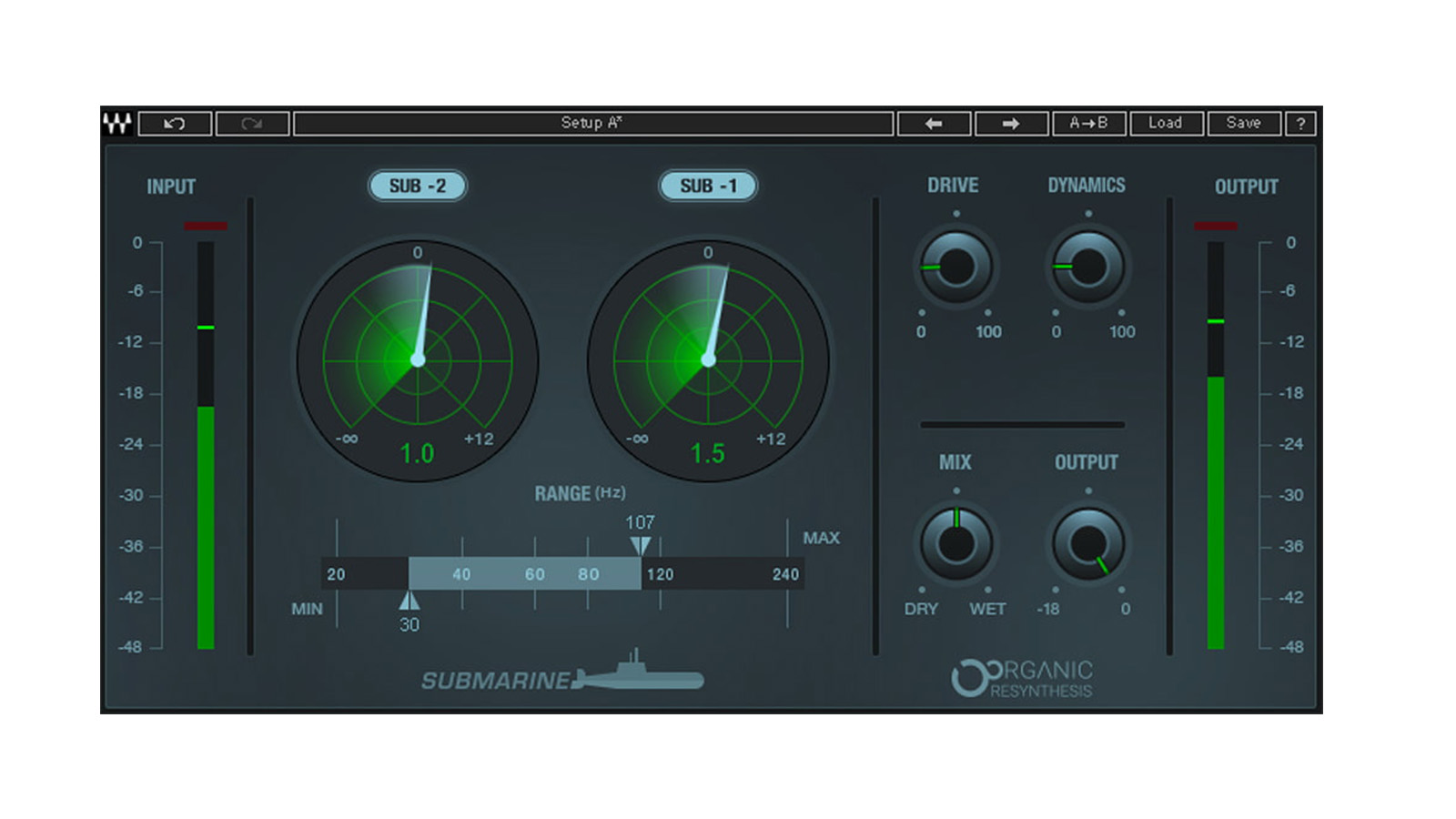
7. Waves Submarine
Our expert review:
Specifications
Reasons to buy
Reasons to avoid
While regular equalisers or bass-boosting plugins simply enhance a signal’s existing low frequencies, a subharmonic generator – as the name implies – synthesises entirely new bass content based on the input signal’s pitch.
Waves are no strangers in this department, having released various bass enhancement tools in the past, but Submarine could be their best yet. Using their proprietary Organic ReSynthesis tech, Submarine analyses the incoming audio’s carrier, pitch, formants and dynamics, then uses this information to generate two independent sub-bass signals, one and two octaves below the original pitch.
While there aren’t loads of tweakable parameters on Submarine’s front panel, there are enough to tailor things to taste: use the Min and Max sliders to restrict the span of triggering frequencies at the input; sum the new sub-content to Mono for stereo compatibility; customise Dynamics with a one-knob compressor; and dial in harmonic distortion with the Drive knob. An onboard EQ and envelope follower would be nice additions for extra tone- and dynamics-shaping but aren’t sorely missed.
As you’d imagine, Submarine particularly excels at bolstering low-end instruments such as kicks and basslines, adding clean and defined low end where needed – but the plugin also comes in useful for fattening breakbeats and beefing up special FX. A must-own for sound designers and sub-bass junkies.
Read the full Waves Submarine review
Best for drums
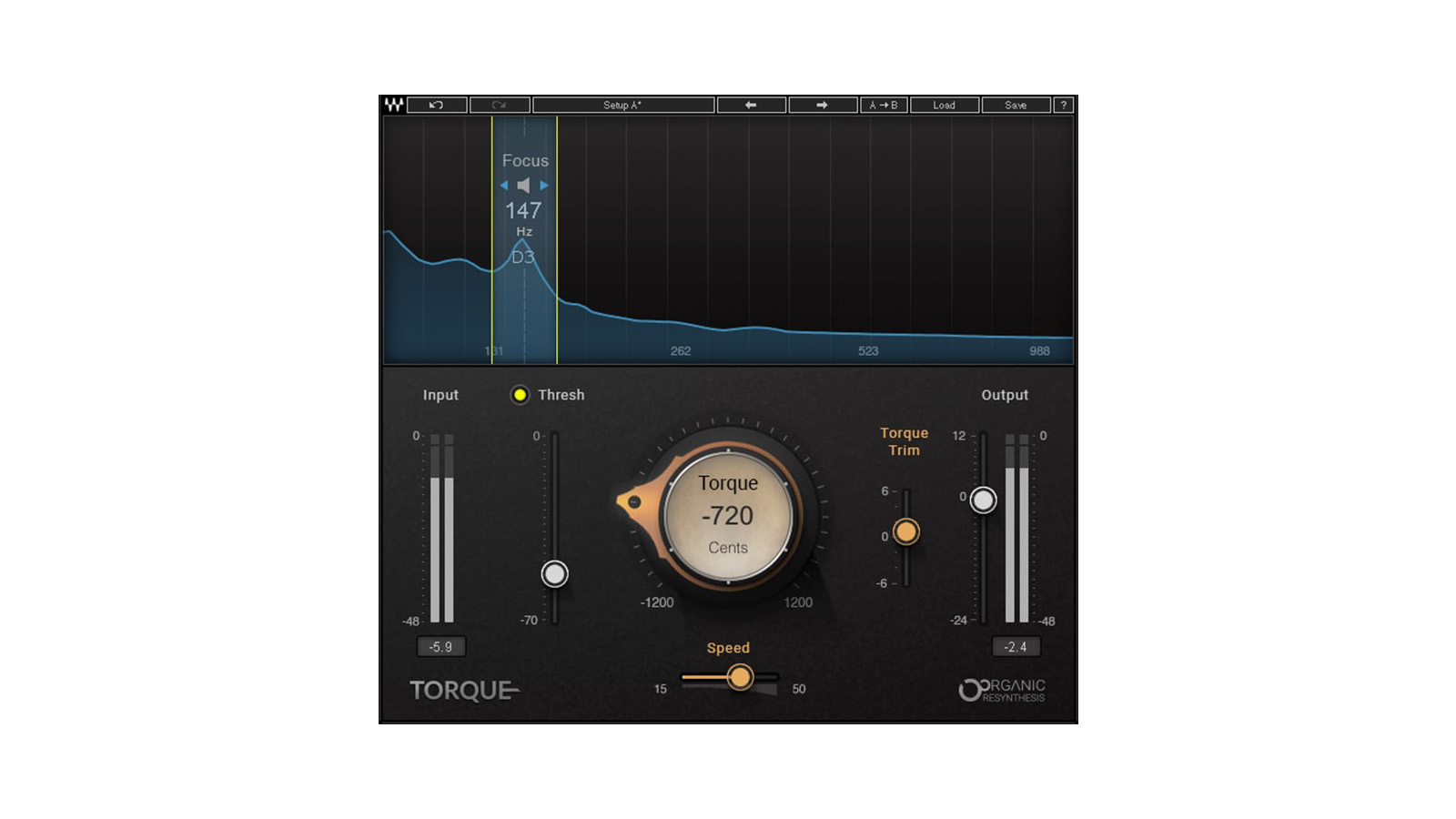
8. Waves Torque
Our expert review:
Specifications
Reasons to buy
Reasons to avoid
Drums are the backbone of any track, and although they don’t always have an obvious pitch, correct tuning is vital nonetheless. Fail to tune your drum kit properly before hitting record, and you’ll have a nightmare repitching them to fit the rest of your music.
Enter Torque. Adopting the same Organic ReSynthesis technology found in Submarine, this unique “drum tone shifter” plugin tracks the input signal’s amplitude, carrier and formant content, allowing you to shift the drum hit’s pitch in real time, with a degree of artefact-free cleanliness and precision unachievable through other means.
Operation is simple. Set the Focus slider around the drum hit’s fundamental or second harmonic on the display, then sweep the main Torque knob to retune. Threshold lets you home in on only louder sounds in a recording, while the Speed slider is used to adjust the onset of the shifting – if you want to keep the transient intact, for example.
Though extreme shifting will introduce noticeable artefacts, Torque generally preserves transient detail and tone at low to medium settings. And with zero-latency operation, the plugin is just as useful in live scenarios as in the studio.
Read the full Waves Torque review
Best for attack
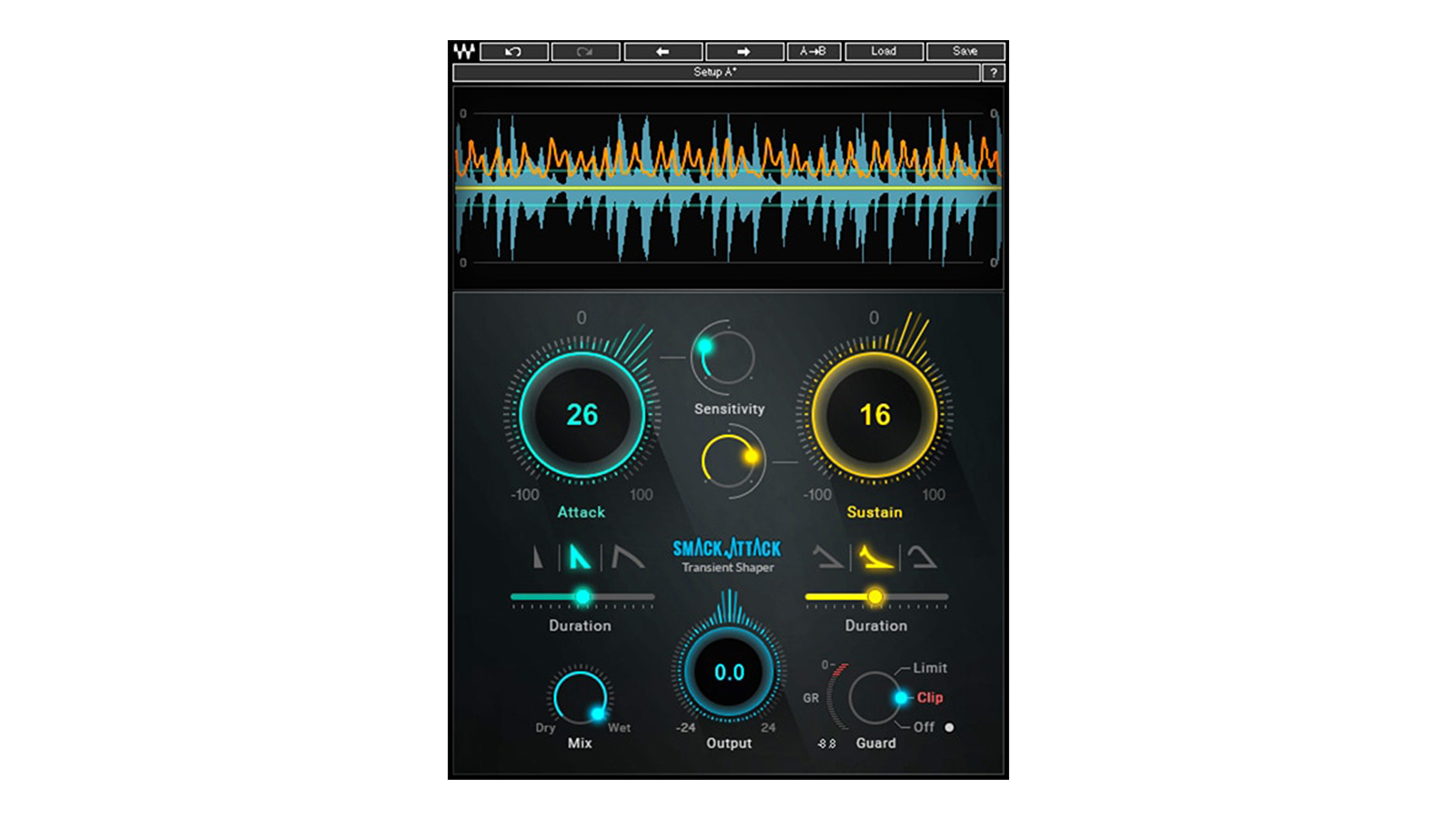
9. Waves Smack Attack
Our expert review:
Specifications
Reasons to buy
Reasons to avoid
Like any transient shaper, Smack Attack enables independent boosting and/or attenuation of the attack and release portions of the transients in the incoming signal - the hit of a drum, pluck of a string, etc - in order to give it more or less impact and punch. However, it’s in the detection of those transients and shaping of the gain control envelope where Smack Attack really sets itself apart.
The Sensitivity and Shape controls are fantastic for detailed defining of transients, the display is genuinely assistive, the Mix control is joyous, and coming from Waves, it almost goes without saying that the sound quality and precision are exceptional. Drums are by no means the only valid target for it, either - it does a sterling job of fronting up (or down) basses, pianos, guitars, synth plucks, and anything else with a transient component.
Probably the deepest transient shaping effect ever committed to code, Smack Attack requires a bit more engagement than other equivalent plugins, but the results it delivers are well worth the effort.
Read the full Waves Smack Attack review
More options...
So those are our top picks, but there are so many more fantastic Waves plugins to explore. We've got more recommendations that we've tested below, including full reviews:
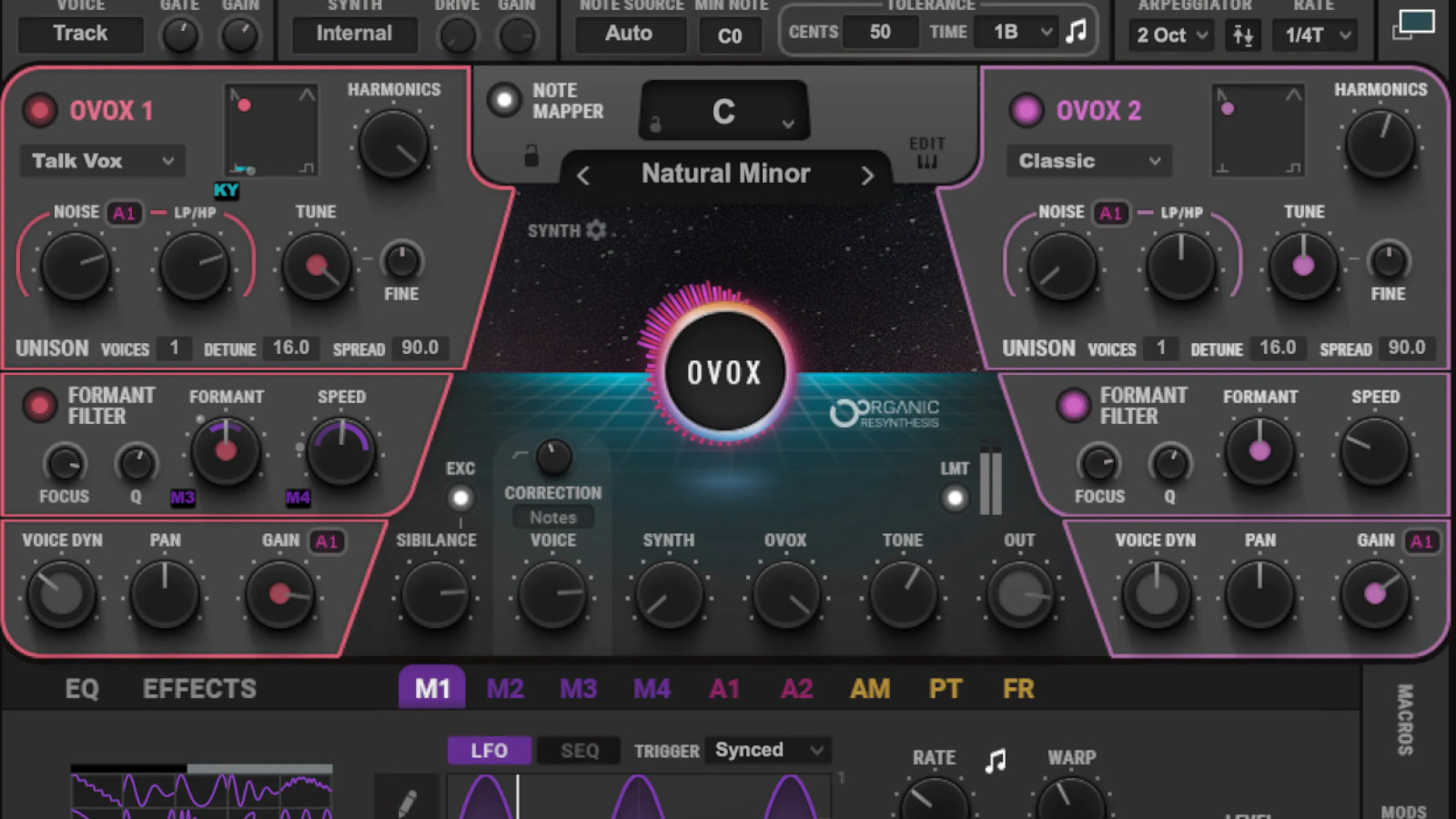
10. Waves OVox
Our expert review:
Specifications
Reasons to buy
Reasons to avoid
Not just an effects plugin, OVox is a synth, vocoder, and vocal processor bundled into one massively capable package. It's equipped with an eight-voice synth that tracks the pitch of an incoming audio signal and uses this to control the oscillators.
OVox can be used as a MIDI-controlled instrument, a MIDI-controlled audio plugin or an insert effect. Simply select which signal is to be used as OVox’s modulator - choose Track or a Sidechain input. Then adjust Tune, Formant and Gain rotaries to taste and mix Voice Correction and Sibilance.
You can also go a lot deeper with the plugin, adjusting settings such as Note Harmonics, Noise and Formant Speed for each oscillator. And once you’ve crafted a new sonic flavour for your vocal sound, the central Note Mapper can force your vocal’s pitch to notes, and the harmoniser can expand your single notes into chords - if you want to get ultra-robotic.
Waves OVox is one of the most comprehensive vocal FX suites out there. It's a powerful toolbox, able to vocode, double, synthesize and re-wire any vocal into a tantalising new musical form.
Learn how to use Waves OVox
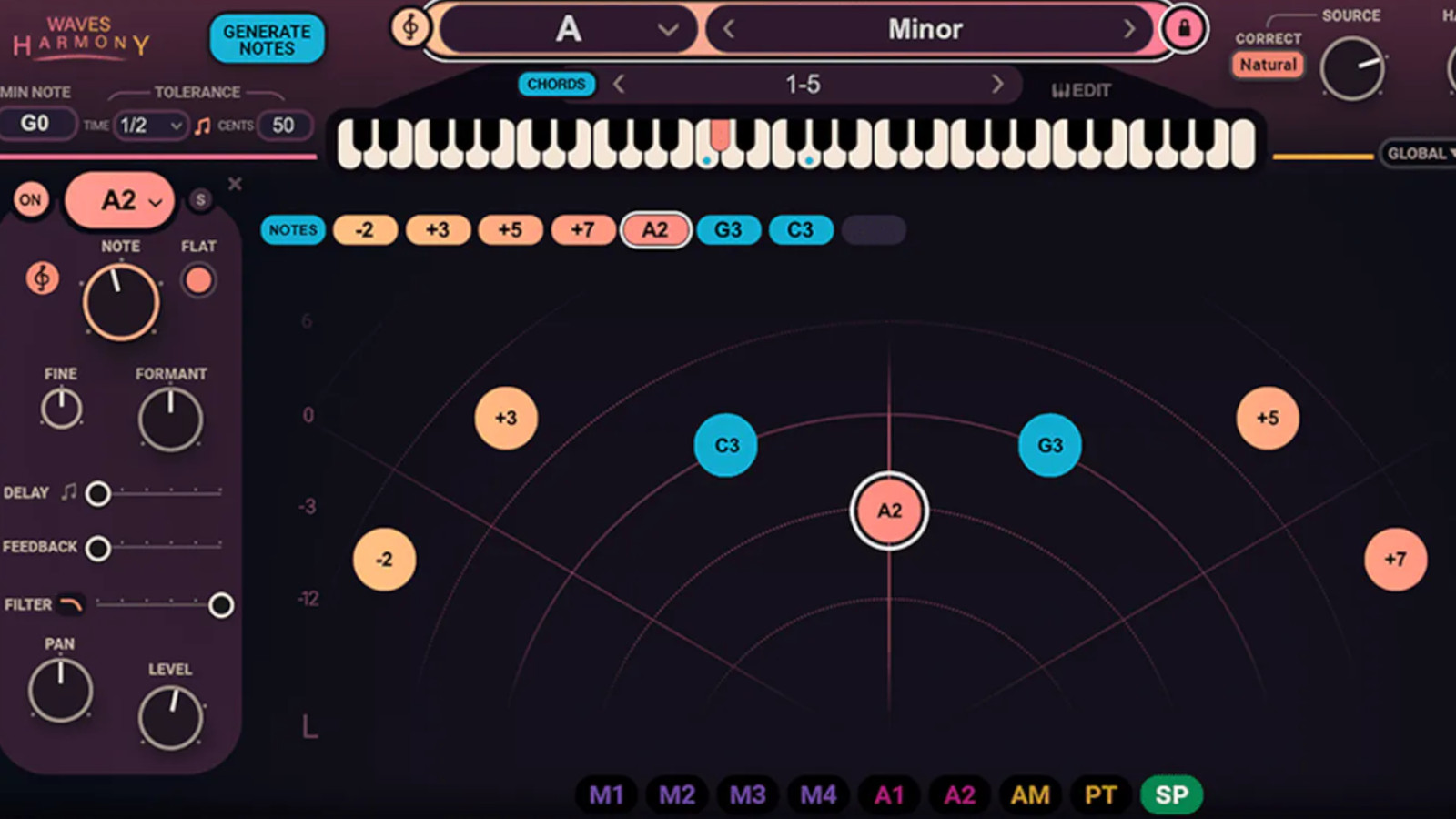
11. Waves Harmony
Our expert review:
Specifications
Reasons to buy
Reasons to avoid
A harmoniser plugin can be a quick and easy godsend for those of us lacking the nouse to track stem after stem of differently pitched vocals. Harmony is laser-focused on the creation of quick and easy harmonisation, with up to eight voices capable of being generated from just one vocal input.
The UI is refreshingly basic, with its central radar graph delivering instant feedback as to where the additional voices are distributed in the stereo field (as well as their respective volume).
There are three main methods of harmony generation: via a MIDI keyboard, manually inputting your harmony on the graph, or letting the plugins smartly determine the best harmony for your vocal. It does this exceptionally well. It’s easy to get instant results - simply pressing the Generate Notes button allows the smart algorithms behind the scenes to calculate how best to bolster the incoming vocal audio.
Waves Harmony delivers sparkling, tailored harmonies. We love using it to create dense vocal beds and Bon Iver-esque auto-tuned, harmonised counter-melodies. Yet Harmony can be put to use across numerous genres and fields. Once again, Waves demonstrates its expertise in making the human voice go further.
Read the full Waves Harmony review
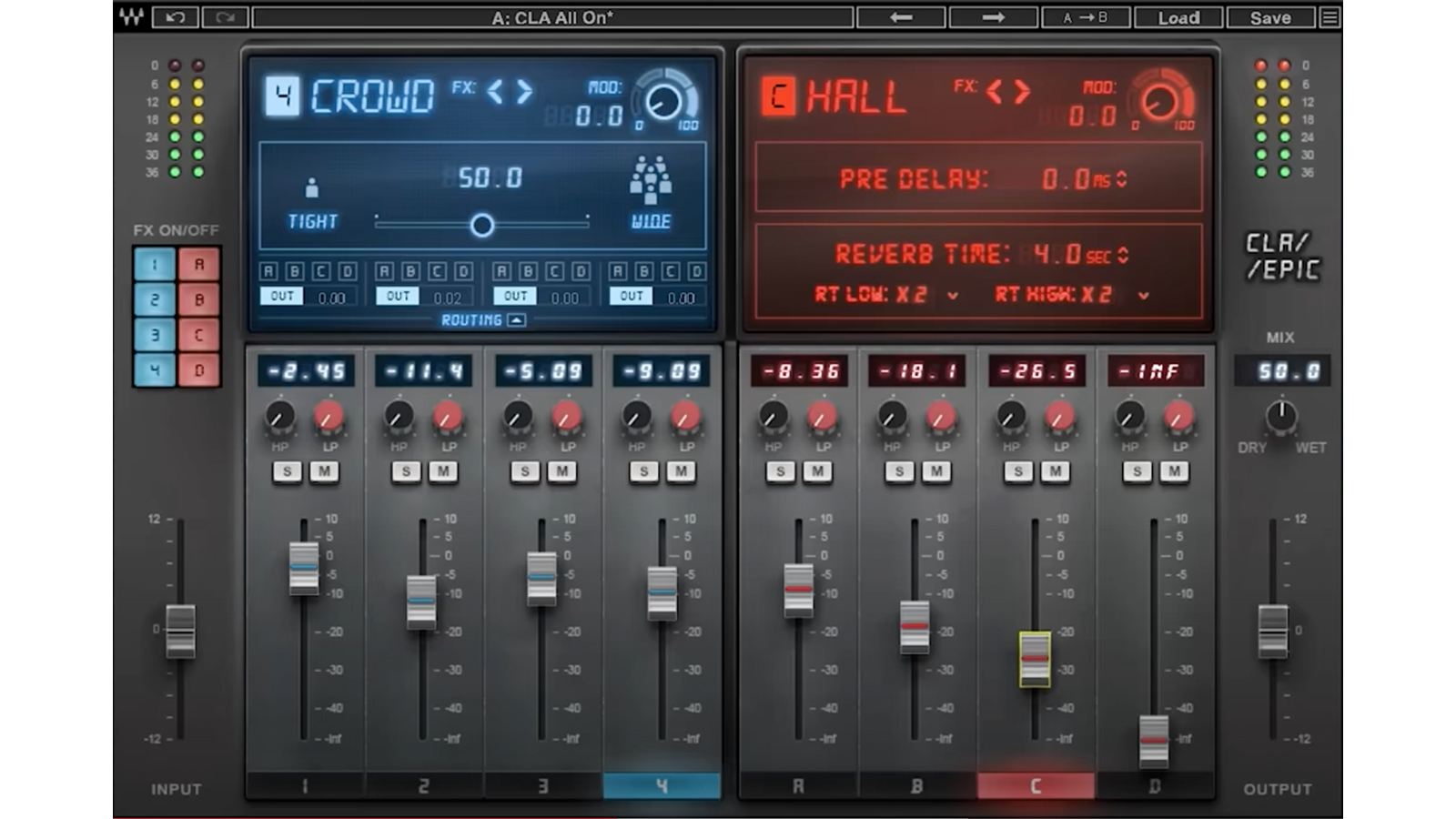
12. Waves CLA Epic
Our expert review:
Specifications
Reasons to buy
Reasons to avoid
This is one of the many Waves plugins with the letters 'CLA' tagged on, so was developed with uber producer and engineer Chris Lord-Alge who has worked with Muse, Foo Fighters, and Bruce Springsteen, among others.
You get four each of Chris' favourite reverbs and delays which you can chain together or use as separate processors. Any of the delays can be sent to any of the reverbs, and it's incredibly easy to layer up to all eight of the effects together to create immense-sounding multi-effects. And in case you are worried about that sounding a huge mess, it's also very simple to sync everything together so it stays in time.
Epic is just like eight very different effect plugins in one, with easy control over every single one. Audition them, edit, and mix them with ease, and create great effects every time.
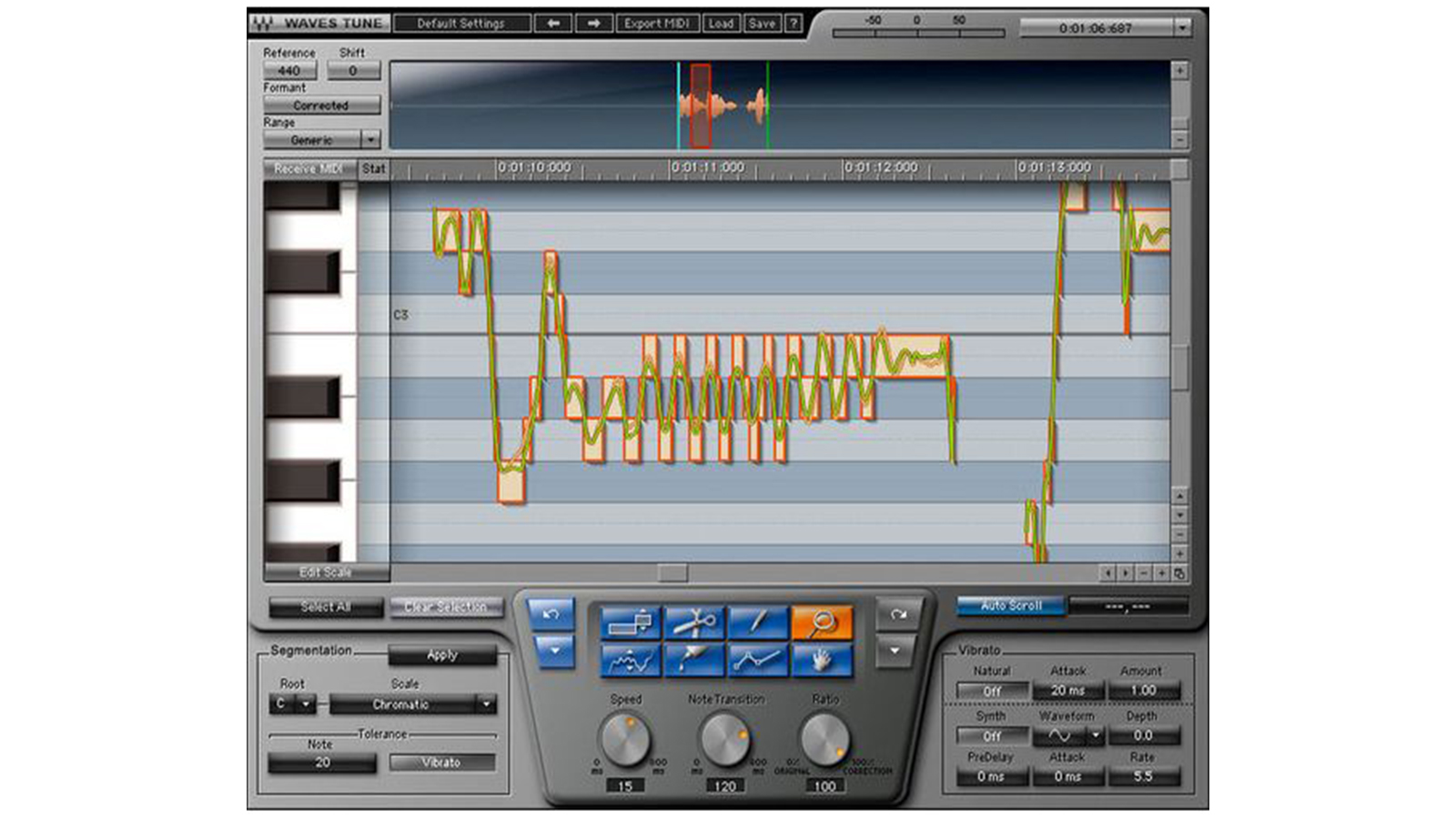
13. Waves Tune
Our expert review:
Specifications
Reasons to buy
Reasons to avoid
Waves Tune is about vocal (and other audio processing), and seeing the notes on screen and making major or minor adjustments to them. You can get the software to do this for you according to various settings, or you can go in and make the edits yourself, note by note. This not only allows you to make pitch changes on individual phrases, for example, but to keep the human feel of the original recording.
Tune is perhaps starting to show its age as it first appeared in 2006. Editing is easy, though, and you can zoom in on notes for microtuning and note shifting. A number of other dials allow easy editing of the Note Transition and Speed, and these determine the 'robotic-ness' of the effect which can be increased if they are at a minimum.
In use, you simply set Tune up with the key of your song and the central display will show (in red) notes not allowed. Playing your recorded audio through the plugin will show you in orange the notes sung, while a green line is the suggested tuning position. Next time you play it, the pitch correction will take effect according to this green line.
Waves Tune certainly has the ability to dehumanize your vocal - in the popular and pleasing way - but it also has fine tuning and detailed, zoomed-in note editing with which you can retain all of the original humanity too.
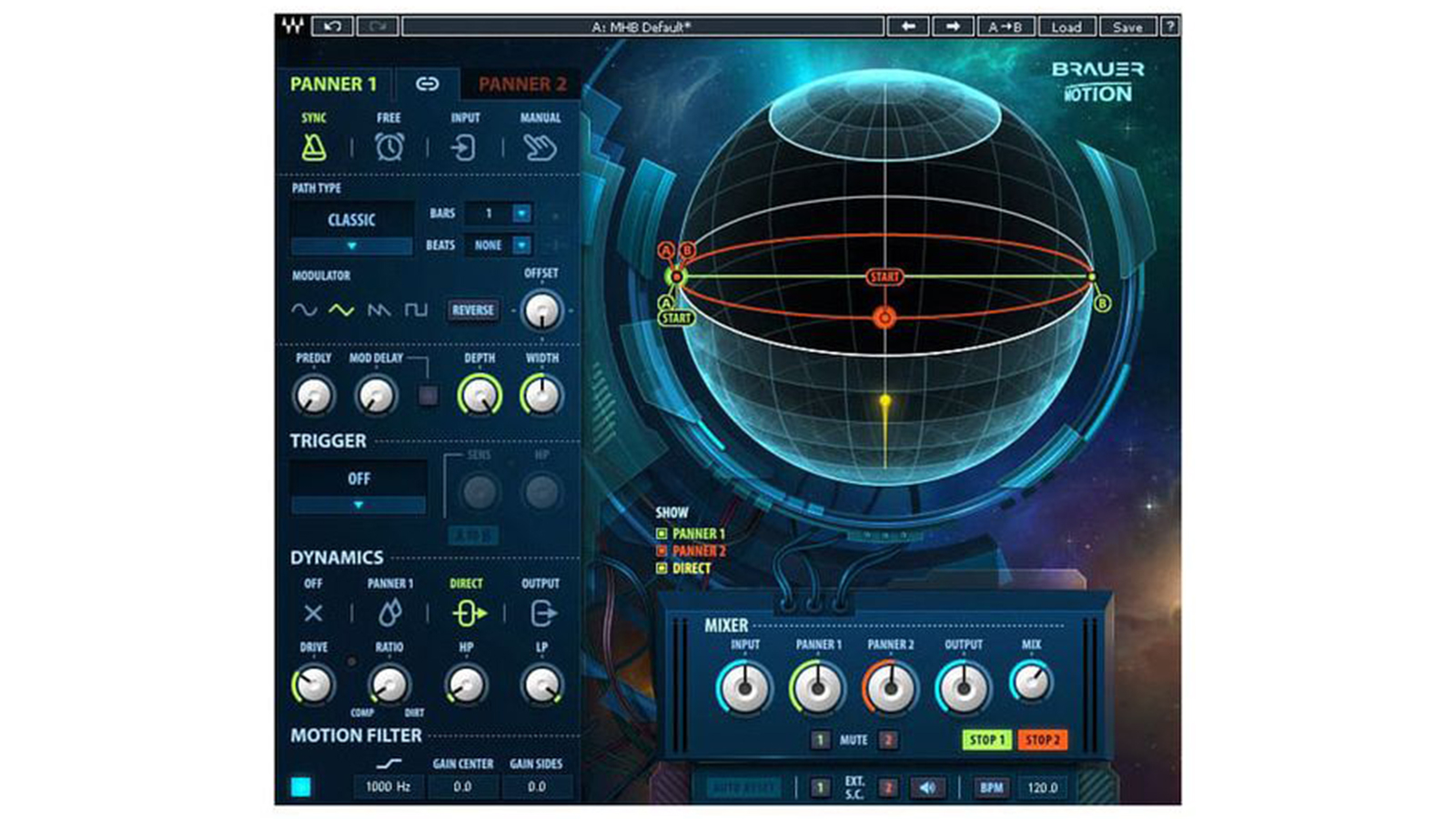
14. Waves Brauer Motion
Our expert review:
Specifications
Reasons to buy
Reasons to avoid
Another Grammy-winning engineer collab, this time created alongside Andrew Brauer (Coldplay, Florence & The Machine), Waves Brauer Motion is a “circular stereo auto-panner” that not only automatically moves your source signal back and forth in the left-to-right ‘2D’ field, but also employs psychoacoustic trickery to manipulate front-to-back motion.
In a nutshell, two independent, identical panners can be LFO-modulated around the colour-coded spherical display in unusual ways. Triggers (including an external sidechain signal) define the motion’s start, stop and change in relation to the input signal.
Unusually for an auto-pan plugin, there’s also a basic Dynamics section, with input boost (via the Drive knob) inducing distortion. A tone-shaping Filter is onboard, too.
While Brauer Motion could be considered overkill for bread-and-butter left-to-right effects, it’s probably the most fully-featured and ambitious plugin available for stereo sound design. A real head-spinner.
Read the full Waves Brauer Motion review
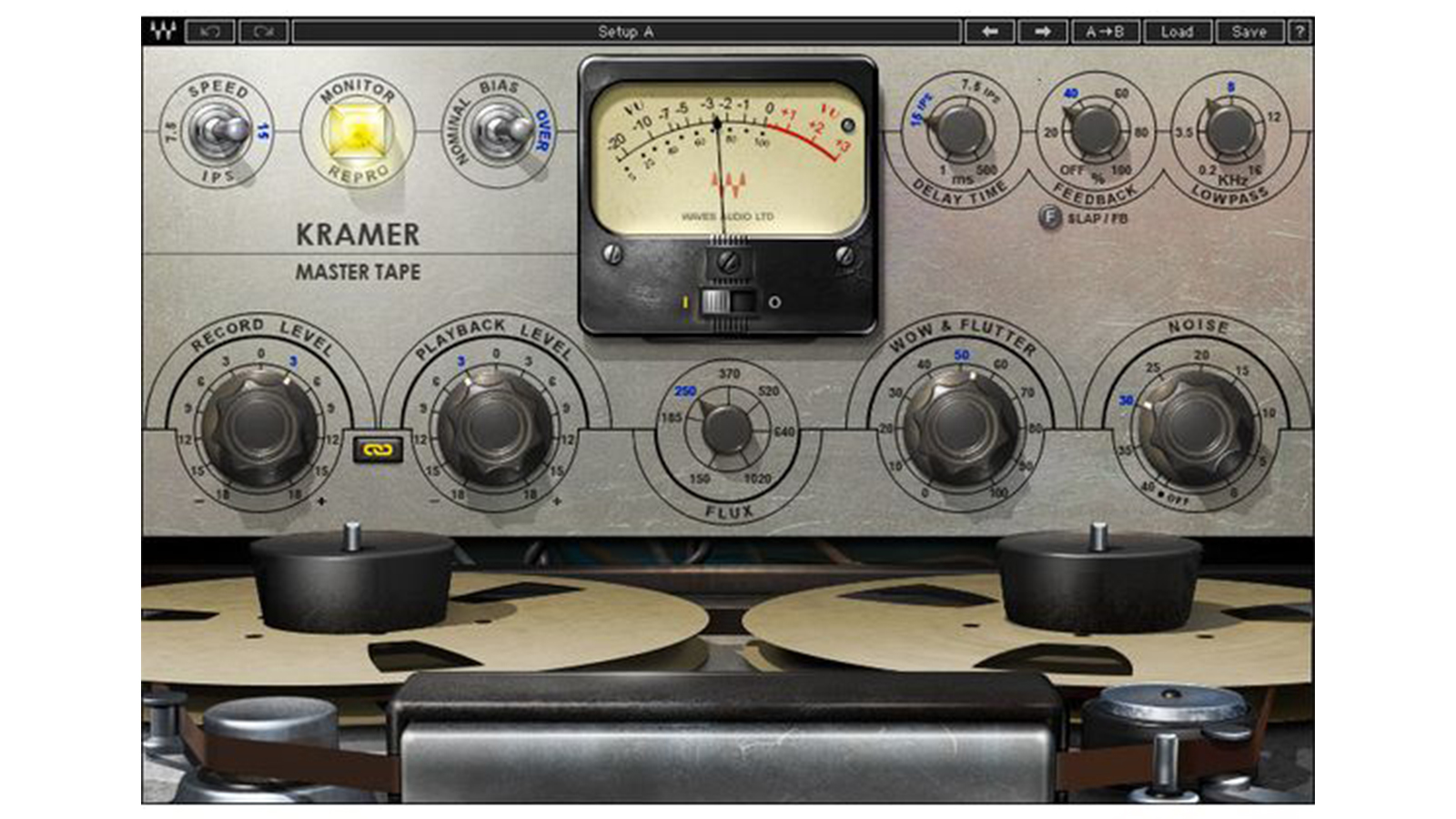
15. Waves Kramer Master Tape
Our expert review:
Specifications
Reasons to buy
Reasons to avoid
The sound of analogue tape can impart digital signals with much-needed warmth and character, which explains why tape emulation plugins are so… ahem, hot right now.
Waves’ offering, created in collaboration with pro engineer Eddie Kramer, models his custom Ampex 350 ¼-inch machine, complete with linkable Record and Playback levels for setting input and output gain. Wow, Flutter and Noise controls, meanwhile, let you dial in tape ‘instability’ and response.
Classic tape delay effects can be dialled in, too: set Delay Time, switch between Slap and Feedback settings, and engage a low-pass filter – perfect for dubbed-out echoes and time-based effects.
Capable of everything from subtle tape smoothening through to crunchy saturation, this much-loved tape plugin is a go-to tool for imparting DAW-based signals with analogue warmth and ‘push’.
Read the full Waves Kramer Master Tape review
Buying advice
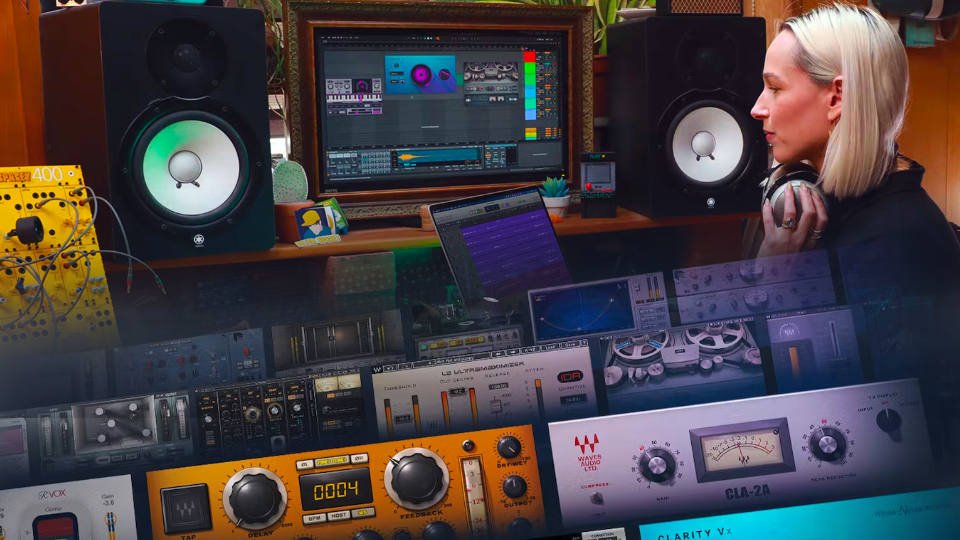
Which Waves plugins should you choose?
Whatever DAW you use will undoubtedly come with several great mixing plugins which should enable you to create good mixes, so you might be wondering why on earth you need to invest in more software for your mixing. Third-party companies like Waves specialise in creating tools that focus on either reimagining vintage hardware to exacting component detail, or creating bespoke tools that are designed for very specific studio tasks. In that way third-party plugins offer more precise solutions over broad-stroke, bundled DAW plugins; they are highly focussed and very good at doing what they do!
What's more, Waves plugins are an almost permanent sale, delivering massive discounts which often increase the more plugins you purchase. It’s rare, then, to have to pay full price for Waves plugins, so use our prices as a guide only - expect to pay a lot less!
In terms of which to buy, this is very much down to any issues you are currently having when mixing and what you are lacking when it comes to your bundled DAW plugins. Most mix engineers have a go-to compressor and EQ that they like to turn to, over and above those supplied in their DAW. These might have their own character, adding a certain colour to the sound, or they might be based on a favourite piece of outboard vintage hardware that has simply become too expensive or too impractical to use in their current studio setup. Using a third-party plugin can therefore give you the sound of a classic piece of gear at a fraction of the price and with the convenience to slot it into a modern DAW-based studio.
Overall, while buying certain plugins is very much a personal choice, having a good range of plugins - a vintage channel strip or compressor and a workhorse ‘clean’ set of tools - is a good idea, just to give you flexibility when it comes to mix down. With that in mind, then, perhaps use your DAW plugins as the workhorse tools, and use your third-party choices to give you that extra character and finesse, a perhaps elusive pro sound or a character that can be yours alone, taking your music above and beyond that produced in DAWs with stock plugins. And remember, this pro sound or edge need not cost as much as you might think - all of the plugins above are currently on sale (or soon will be!).
What is Waves Creative Access?
Waves Creative Access is Waves’ plugins subscription service which can be paid for either monthly or annually. There are two tiers: Waves Ultimate or Waves Essential. The right one for you depends on your needs as a producer.
Waves Ultimate gives you unlimited access to more than 230 Waves plugins including all the ones recommended in this guide. For the length of your subscription you will receive the latest updates to your plugins and any newly-launched plugins will be yours. Waves Ultimate costs $20.83 per month.
Waves Essential is cheaper at $12.50 per month, but you’ll only have access to 110 plugins and you’ll get select new plugins launched in the future, but not all of them.
Subscribers to both membership tiers also get the Waves Stream service for remote audio collaboration, and StudioVerse, a collection of thousands of artist-designed, mix-ready plugin chains. AI recommends chains based on your sound, and there are easy-to-use macros for fast adjustments. This is an open platform too, so everyone who uses it can add more chains.
You can cancel your subscription at any time, but if you do, you’ll lose access to your plugins at the end of your existing period. Currently, if you sign up for a year, you'll save $29.89 and $49.89 on Essential and Ultimate respectively.
Can I try Waves Creative Access before I commit?
MusicRadar's got your back
Yes, currently Waves is offering a 7 day free trial to anyone interested in checking out the service.
How we choose the best Waves plugins
Here at MusicRadar, we are experts in our field, with many years of playing, creating and product testing between us. We live and breathe everything music gear related, and we draw on this knowledge and experience of using products in live, recording and rehearsal scenarios when selecting the products for our guides.
When choosing what we believe to be the best Waves plugins available right now, we combine our hands-on experience, user reviews and testimonies and engage in lengthy discussions with our editorial colleagues to reach a consensus about the top products in any given category.
First and foremost, we are musicians, and we want other players to find the right product for them. So we take into careful consideration everything from budget to feature set, ease of use and durability to come up with a list of what we can safely say are the best Waves plugins on the market right now.
Find out more about how we test music gear and services at MusicRadar.
Related buyer's guides
- Our pick of the best vocal plugins
- Need a new computer? These are the best laptops for music production
- Or the best PCs for music production
Want all the hottest music and gear news, reviews, deals, features and more, direct to your inbox? Sign up here.
Andy has been writing about music production and technology for 30 years having started out on Music Technology magazine back in 1992. He has edited the magazines Future Music, Keyboard Review, MusicTech and Computer Music, which he helped launch back in 1998. He owns way too many synthesizers.

